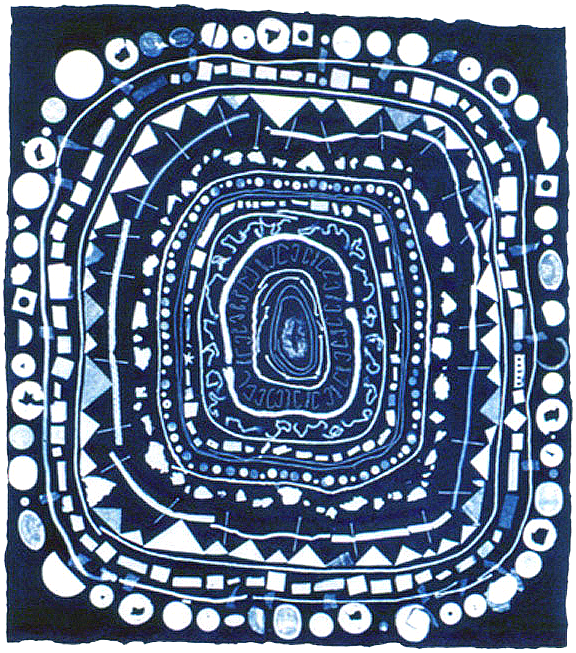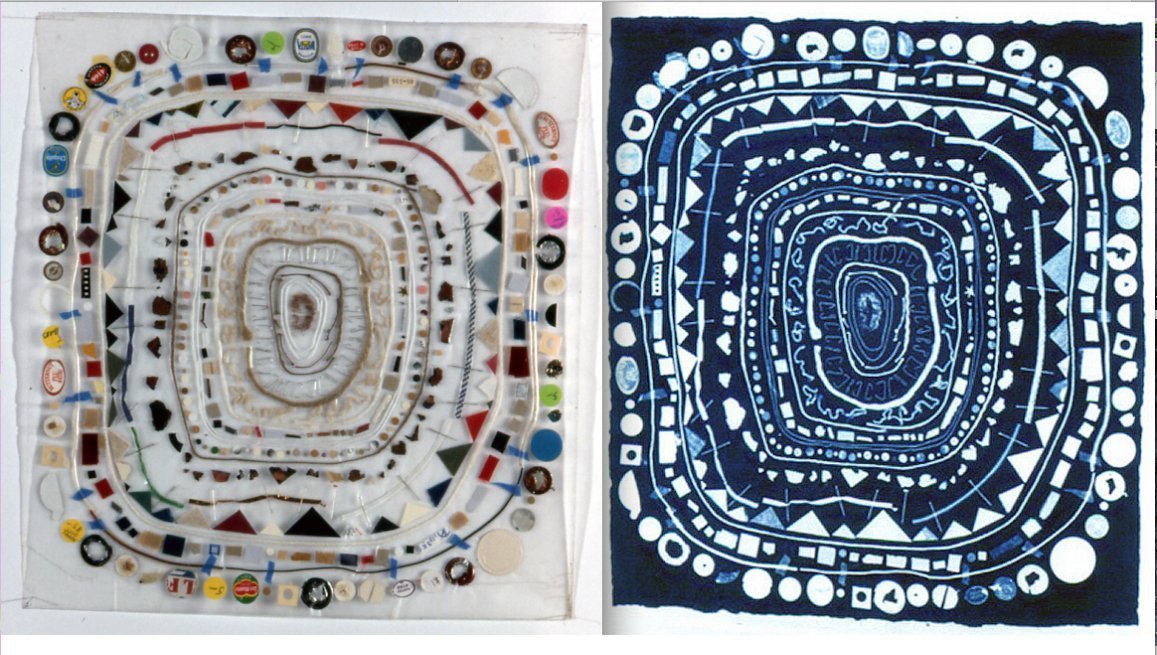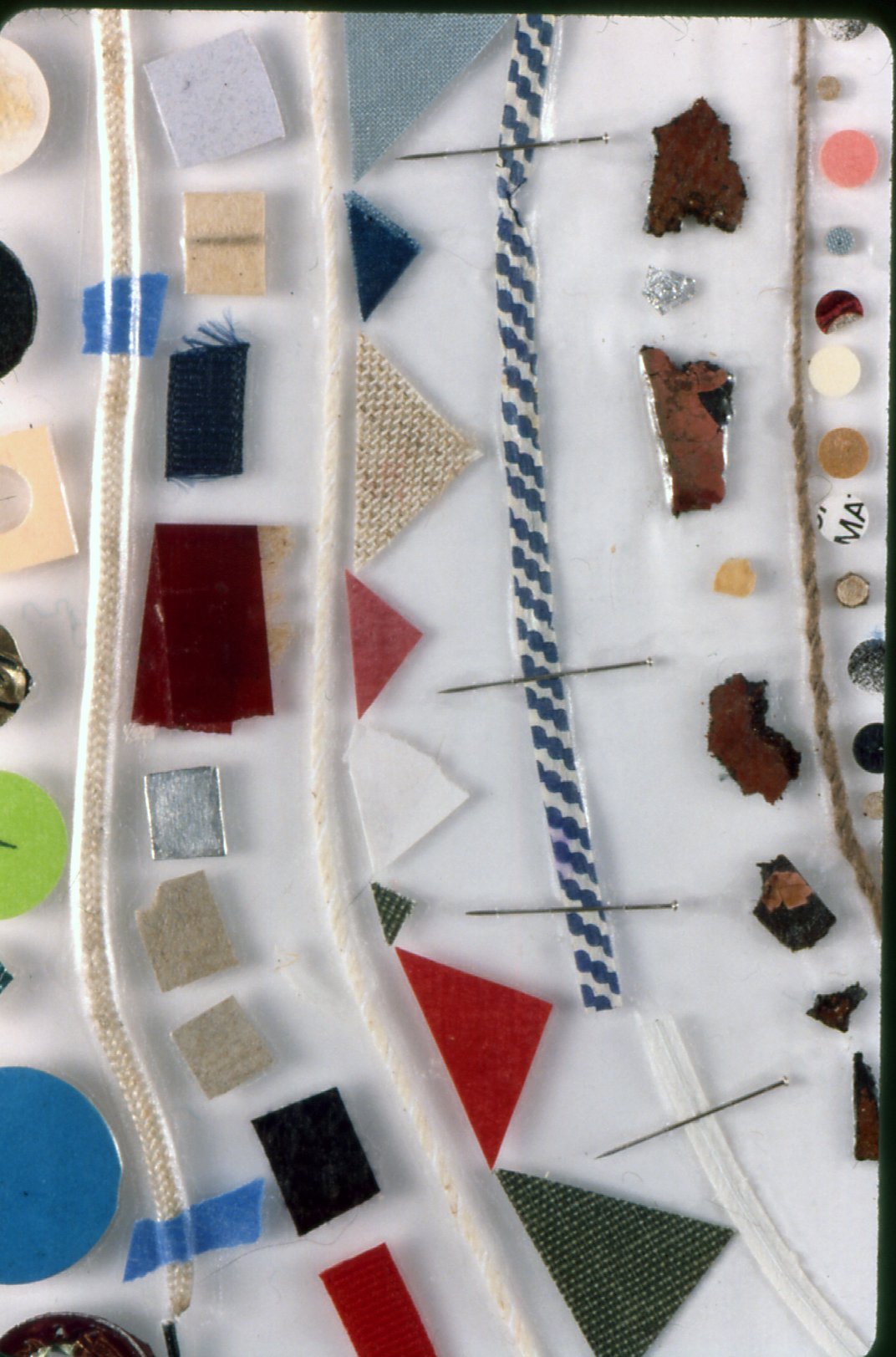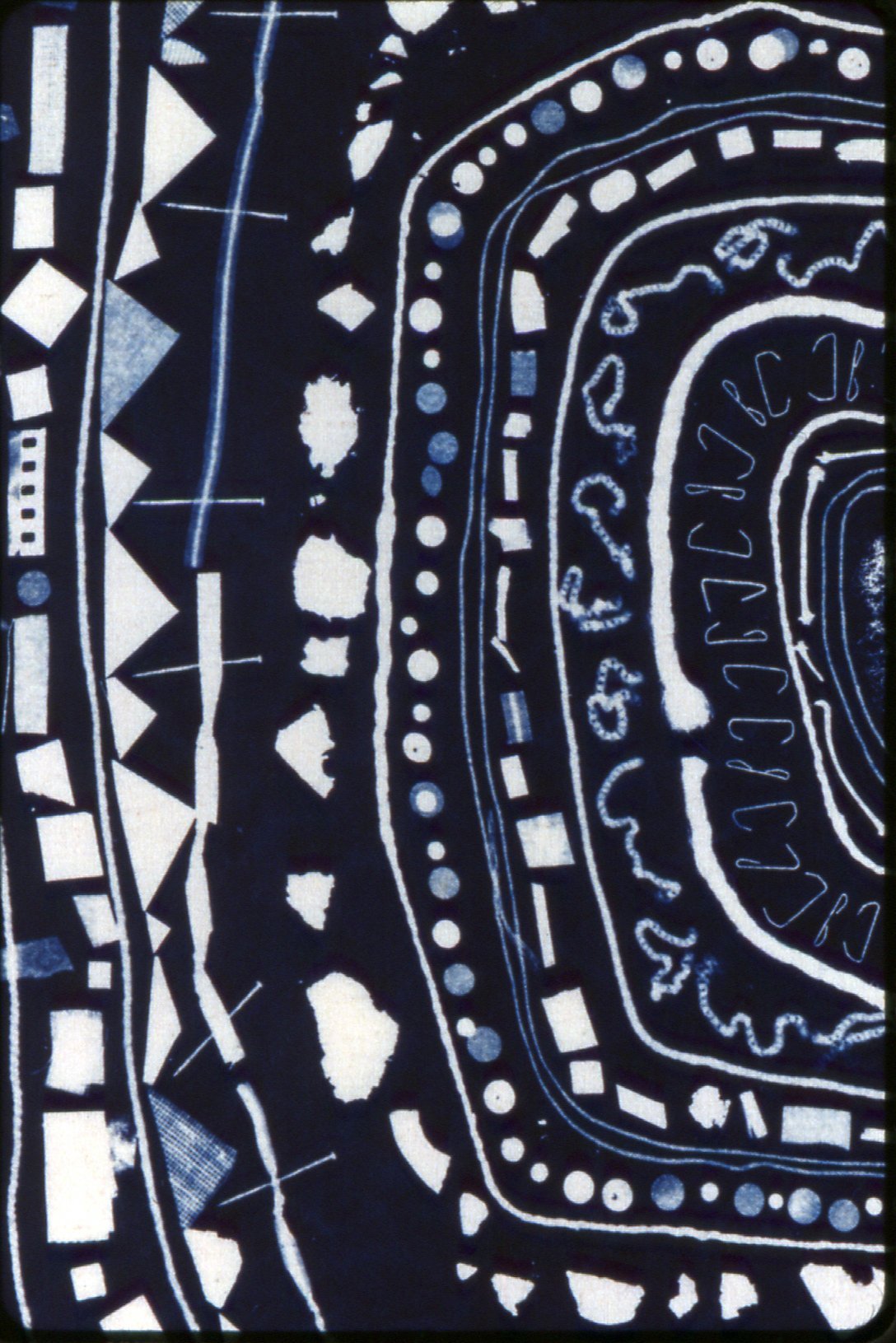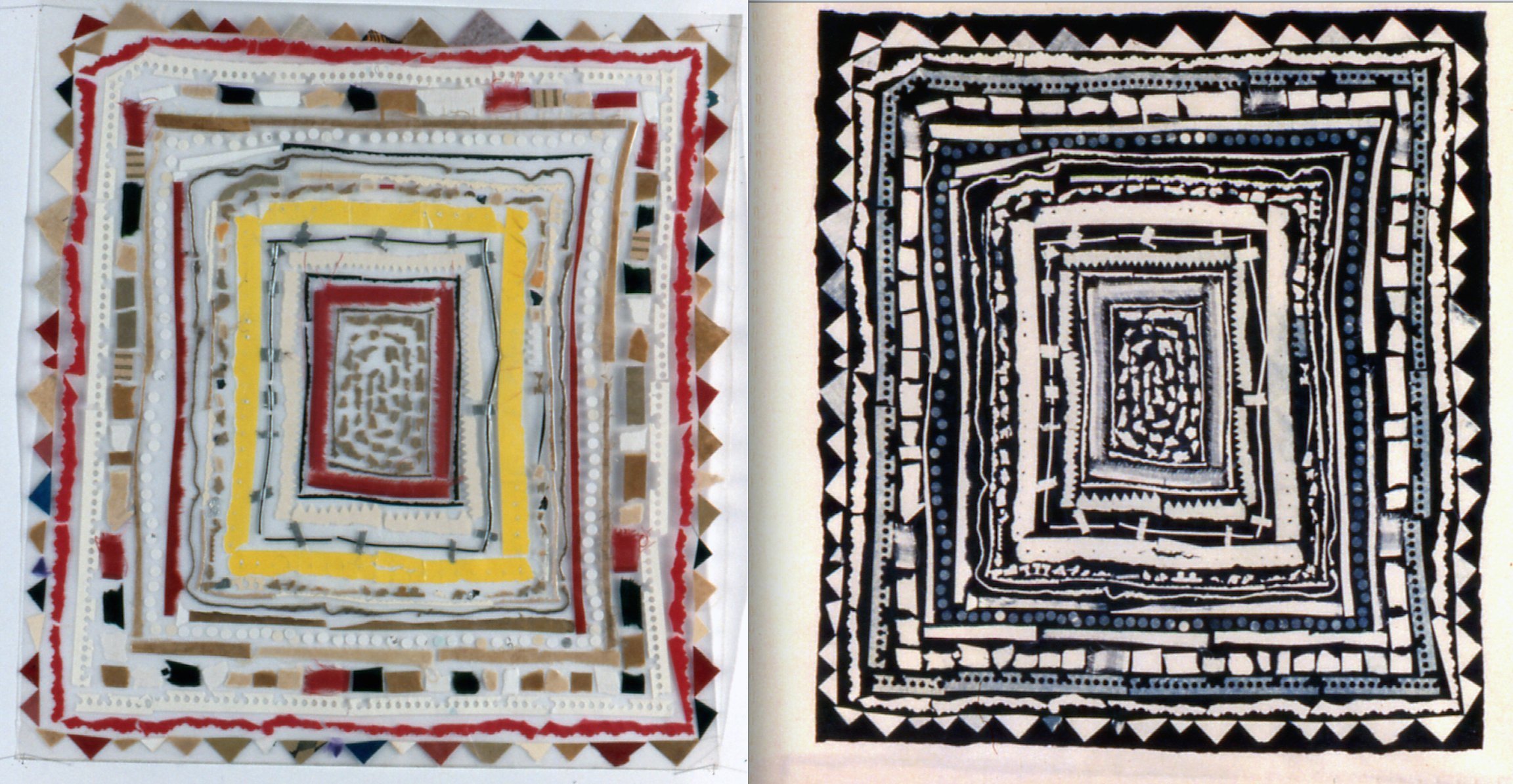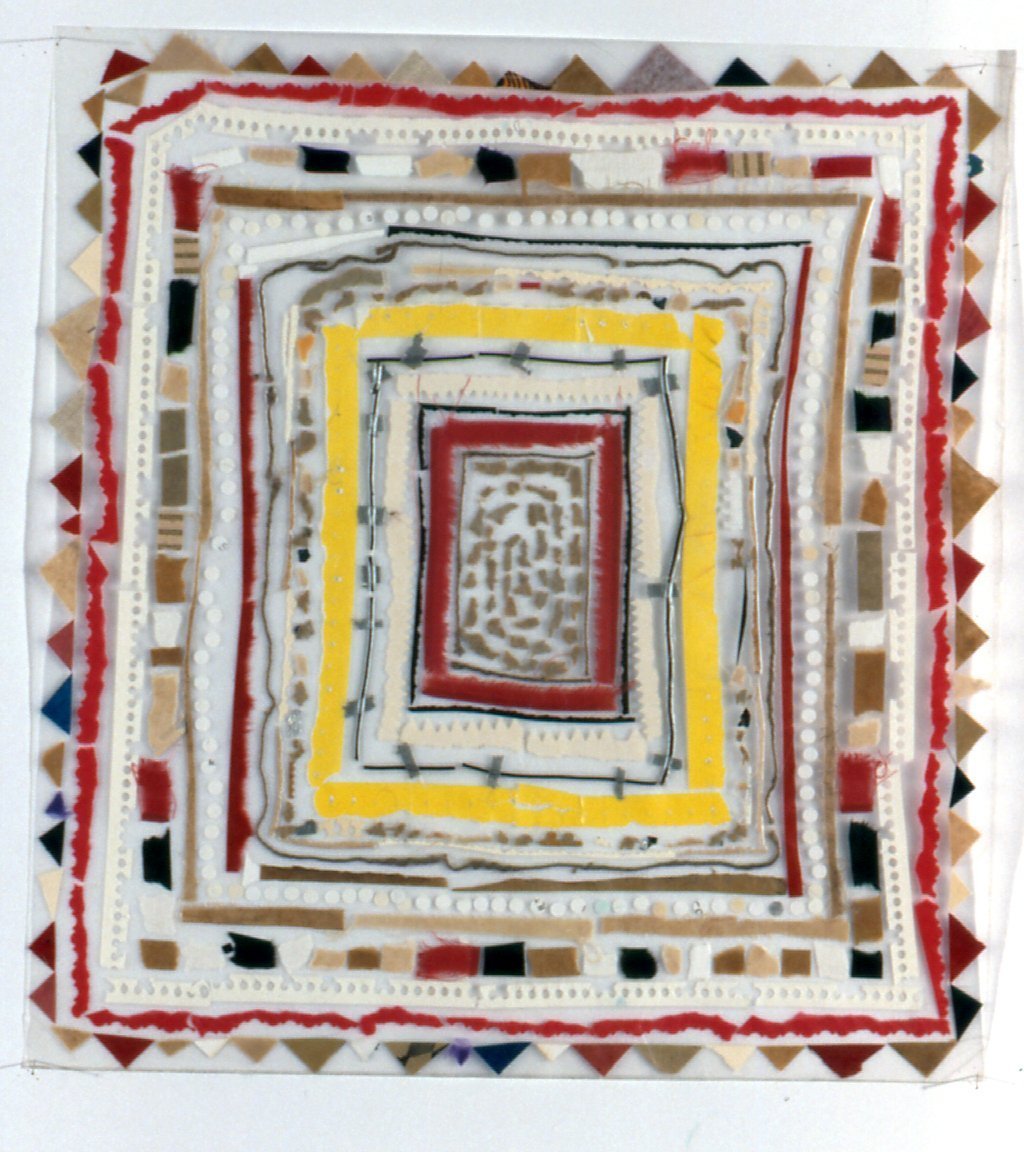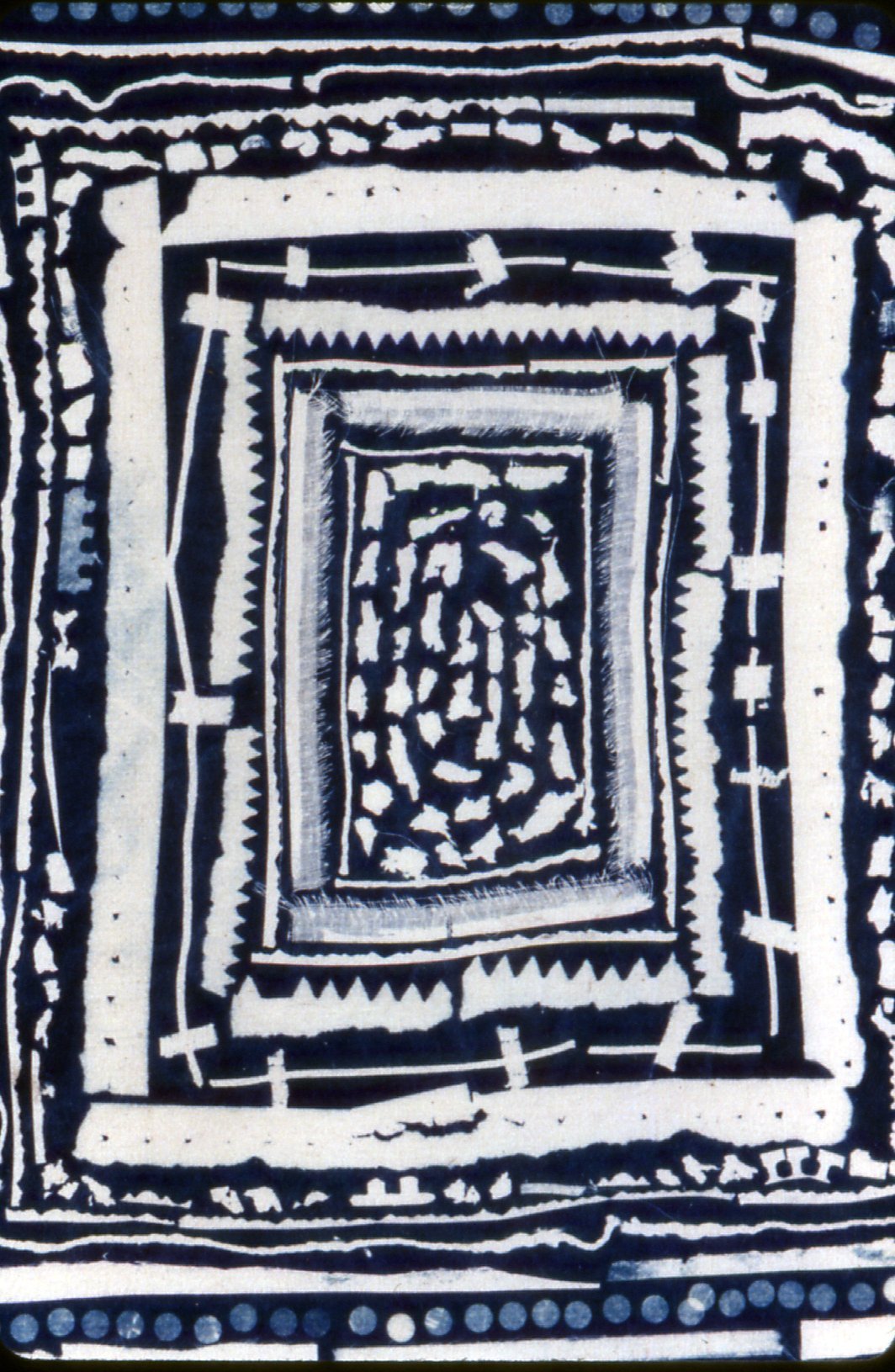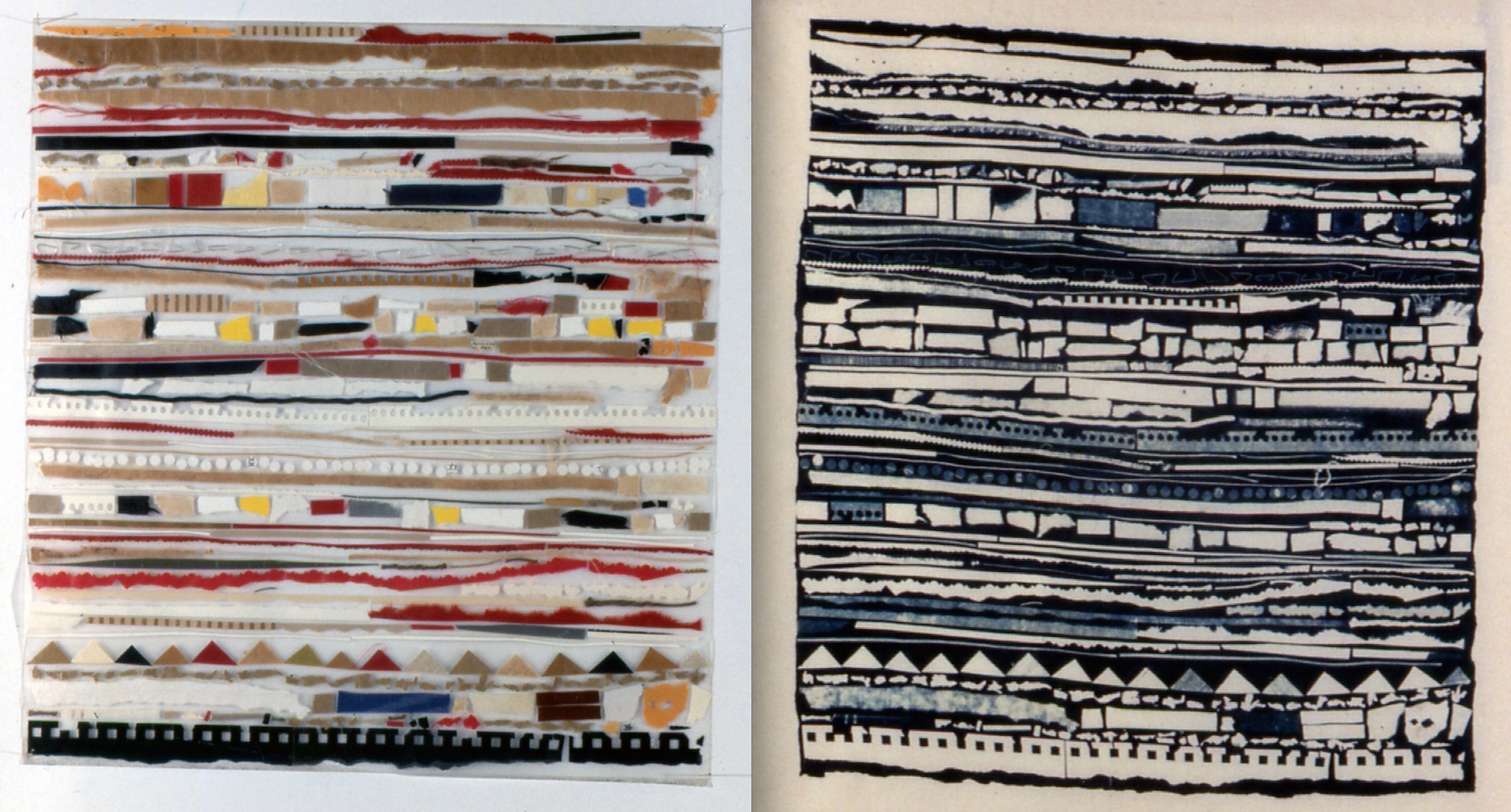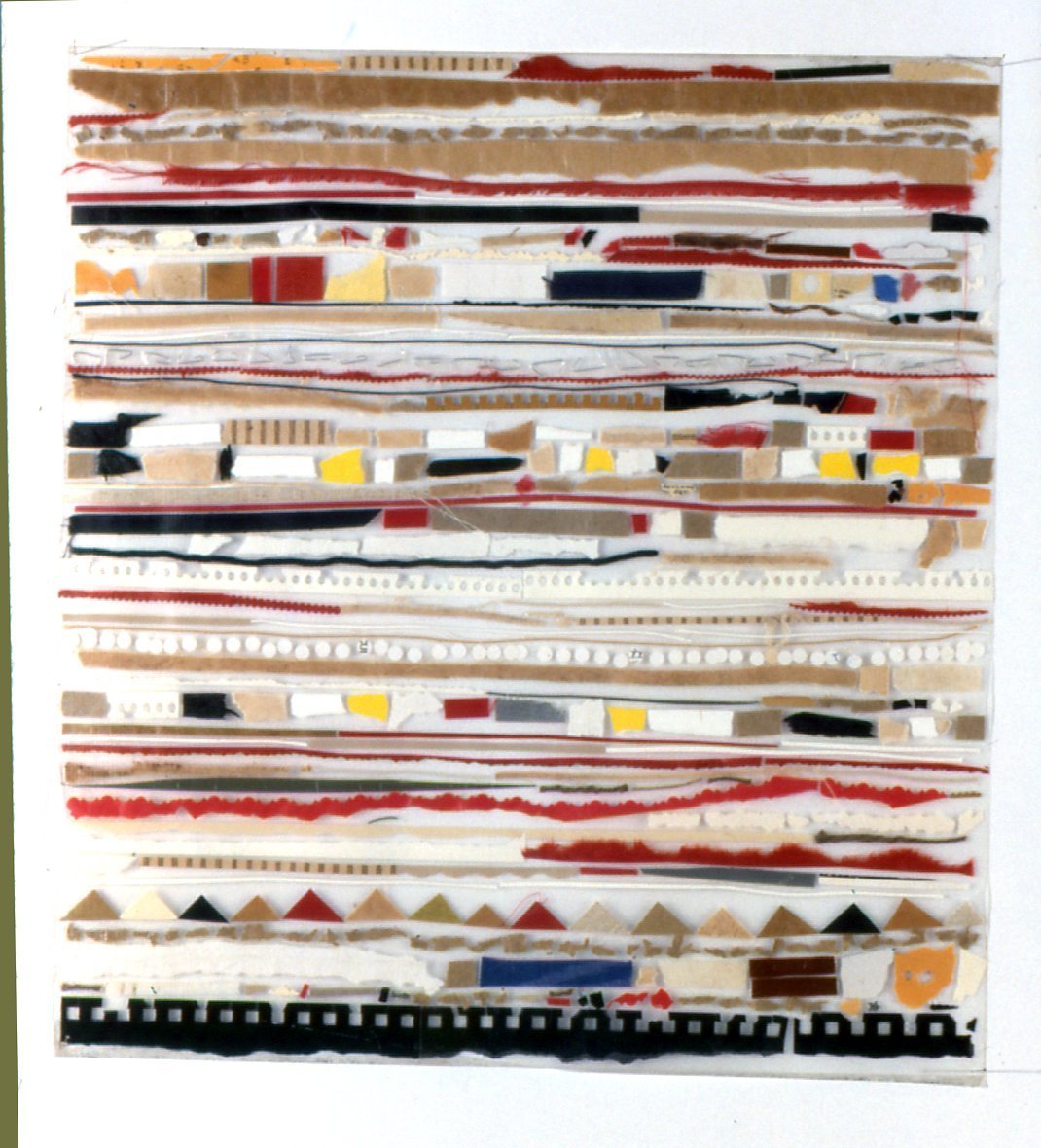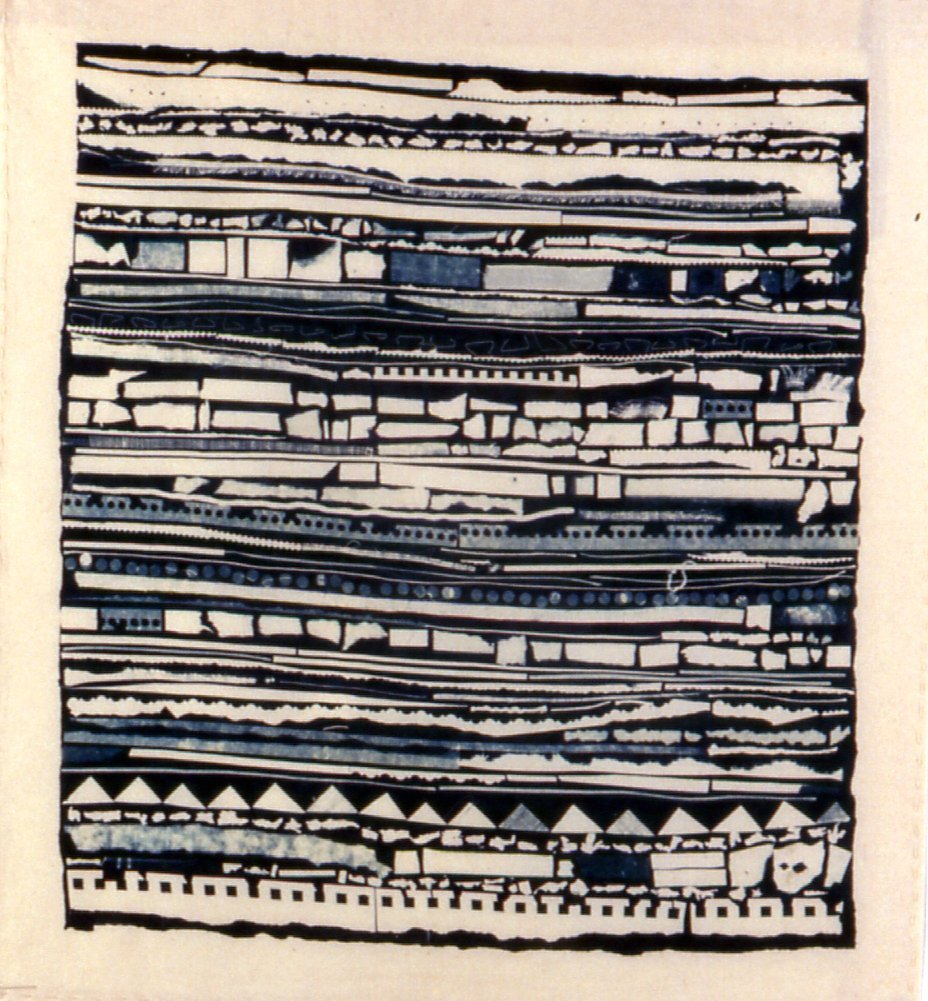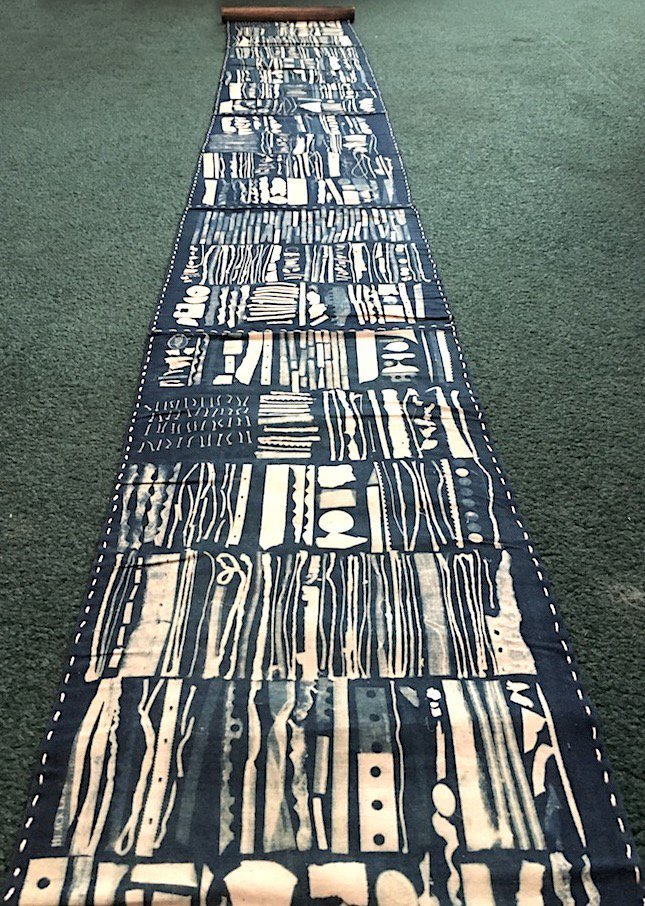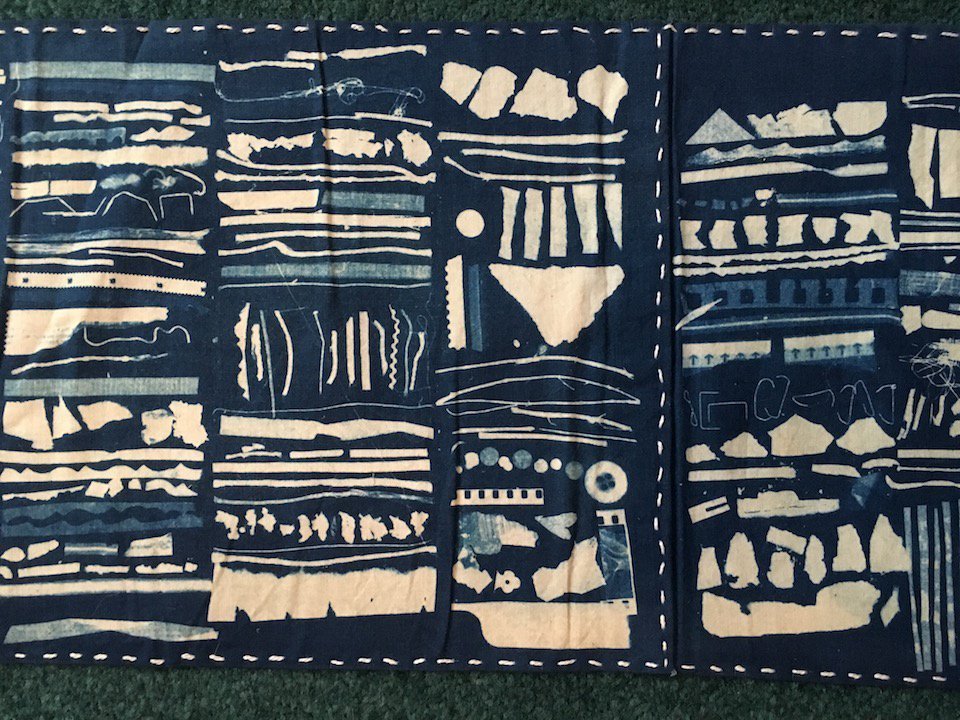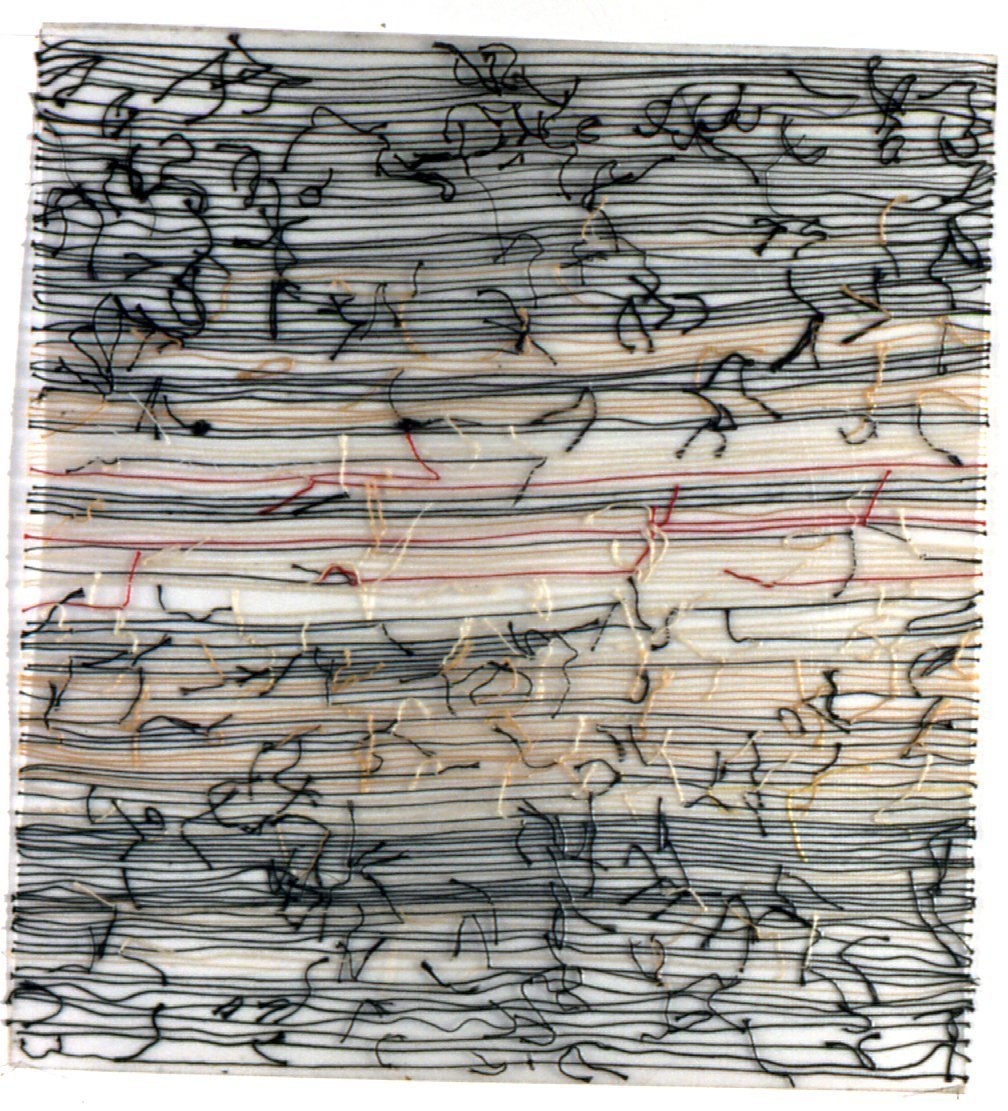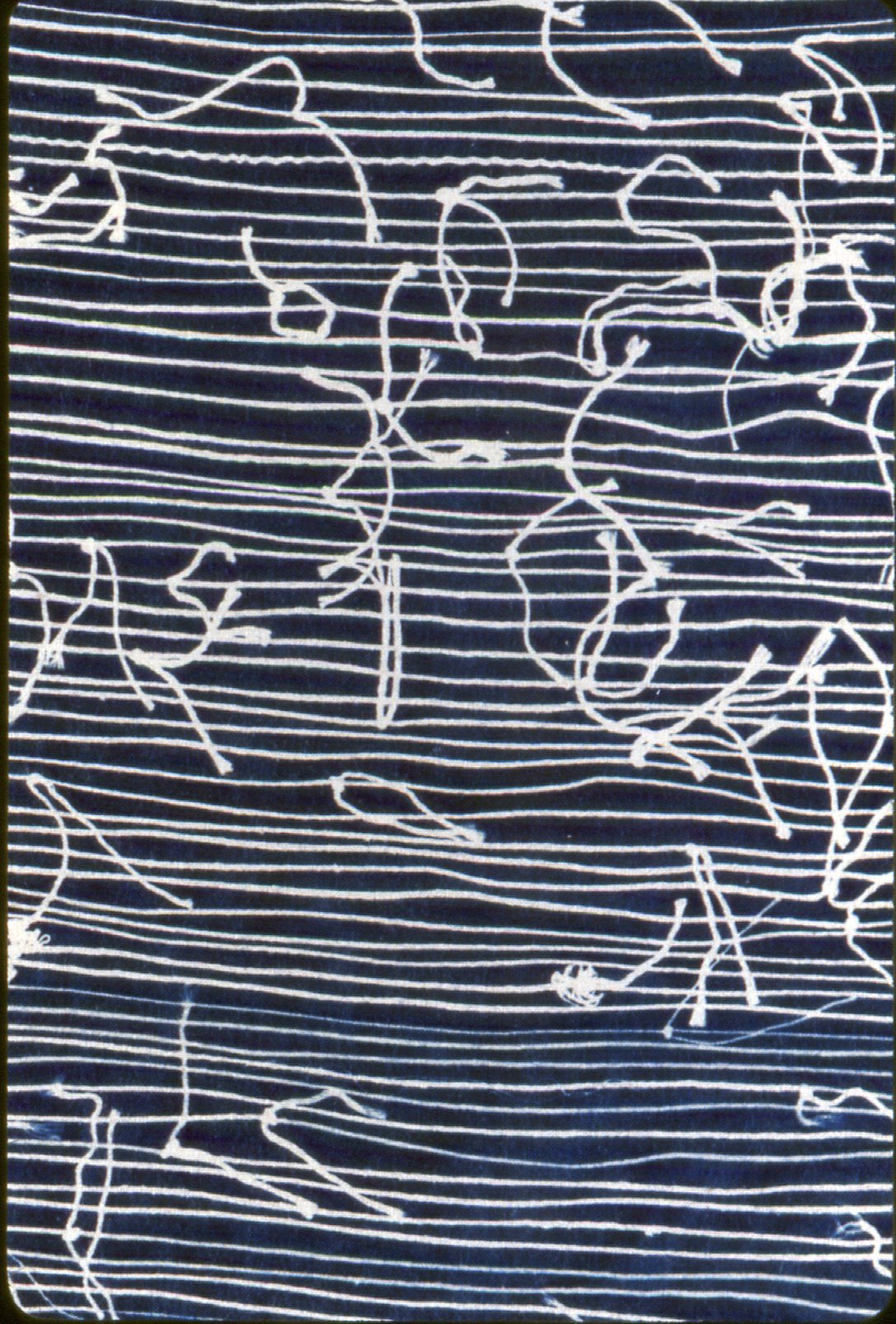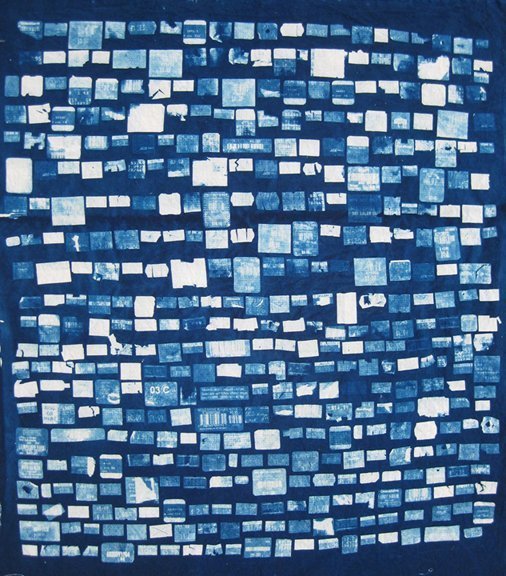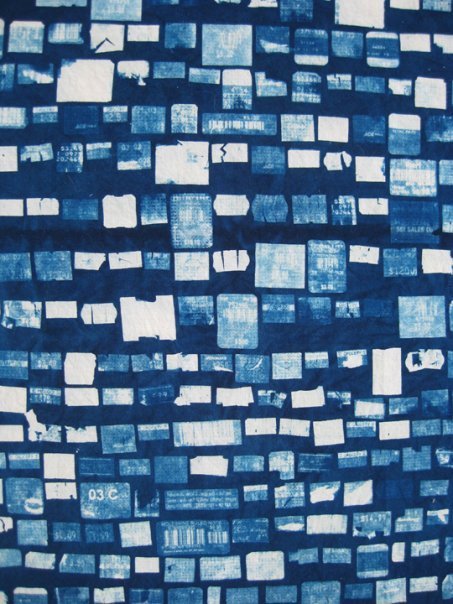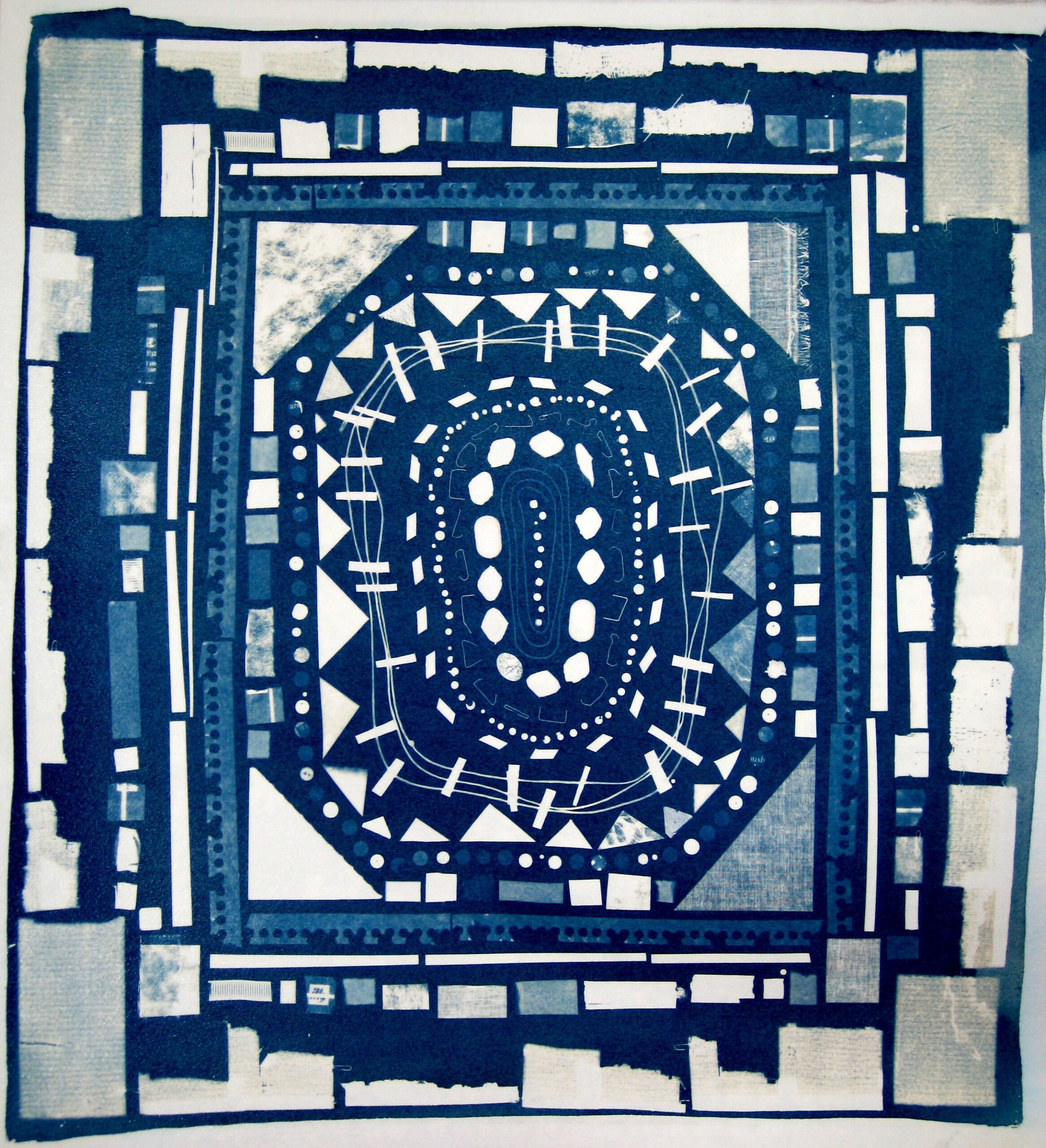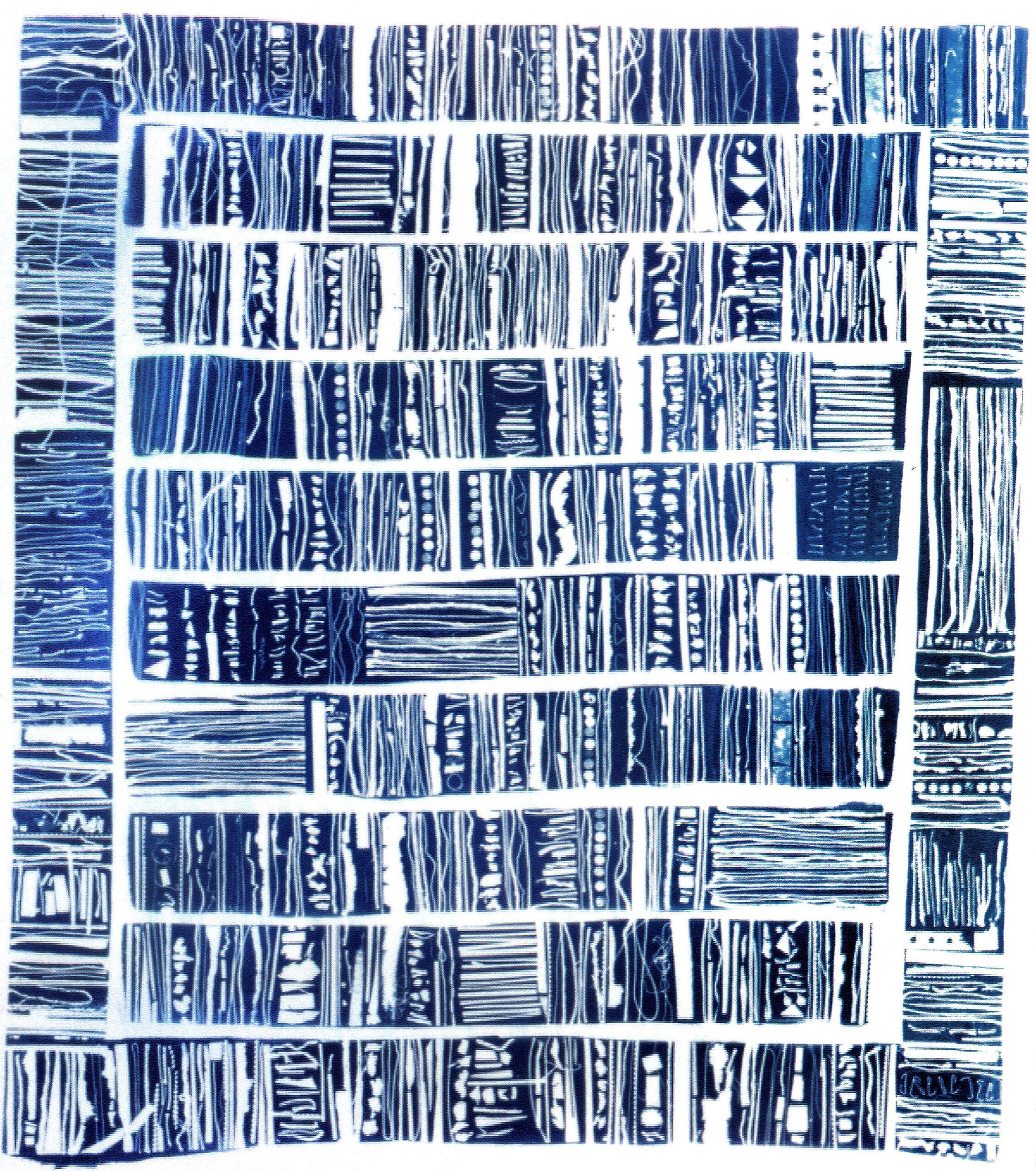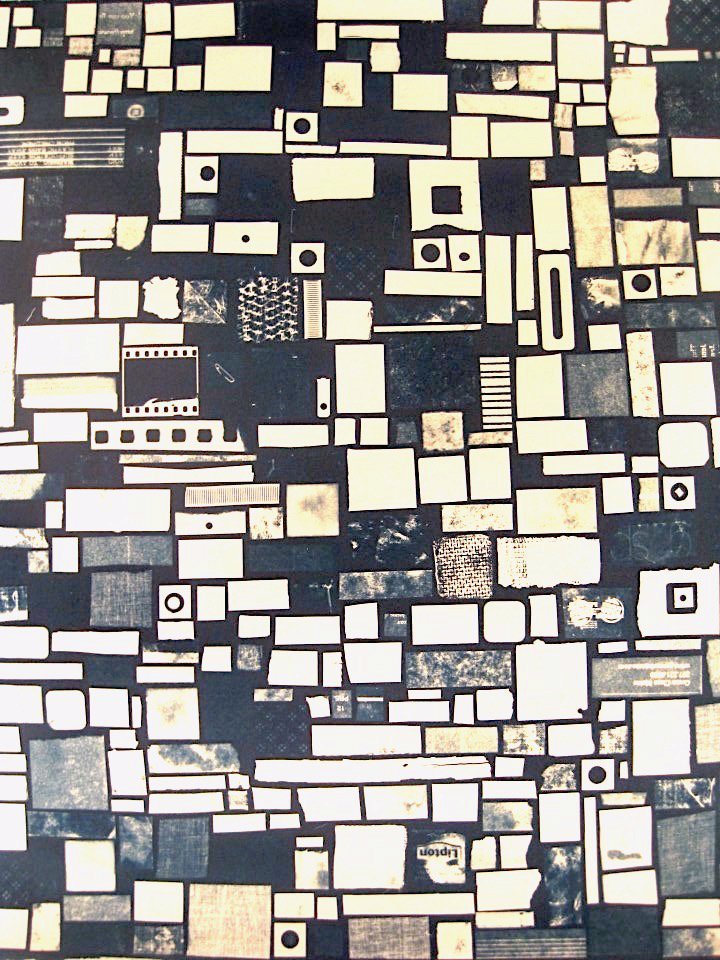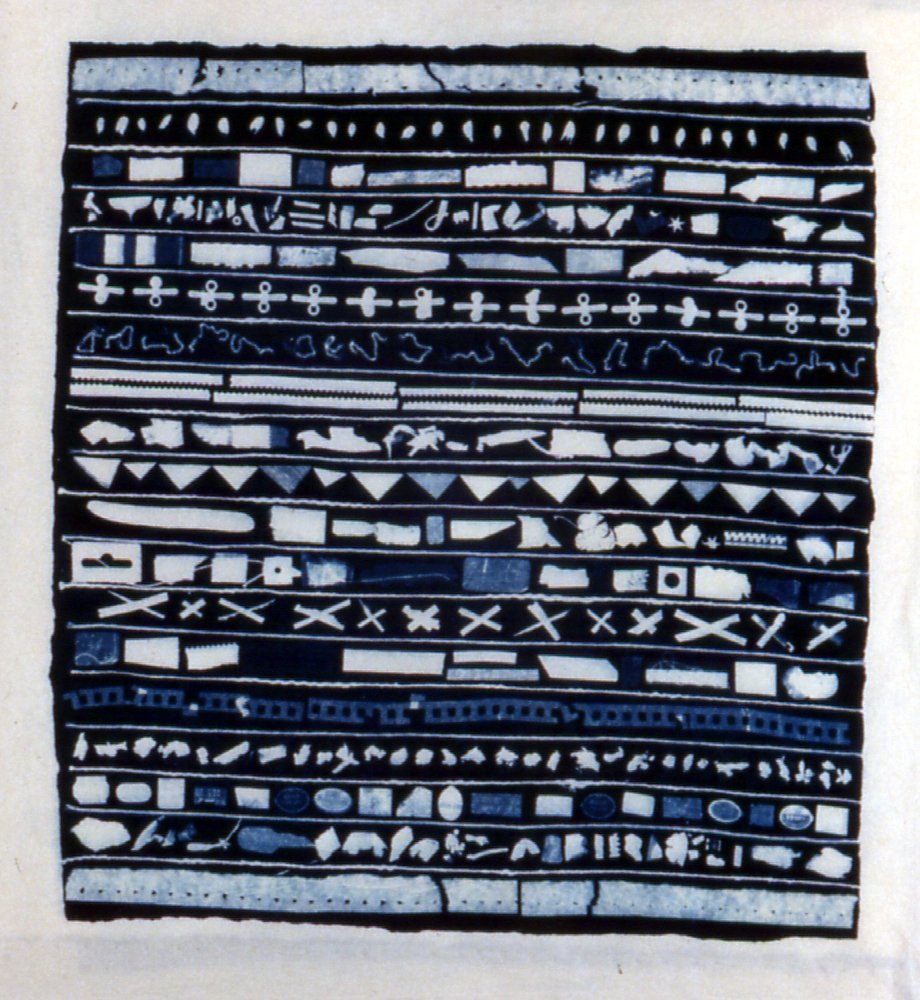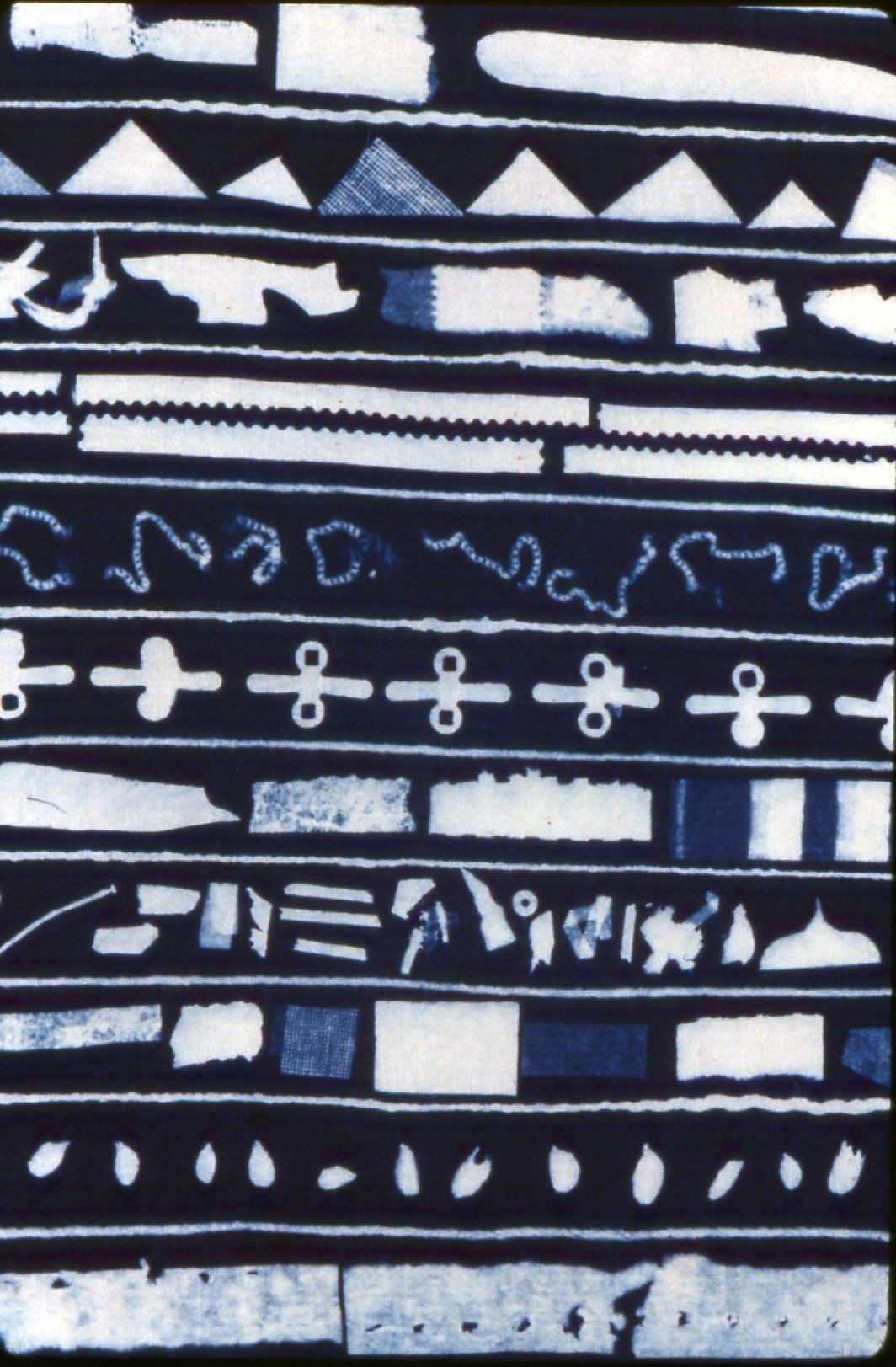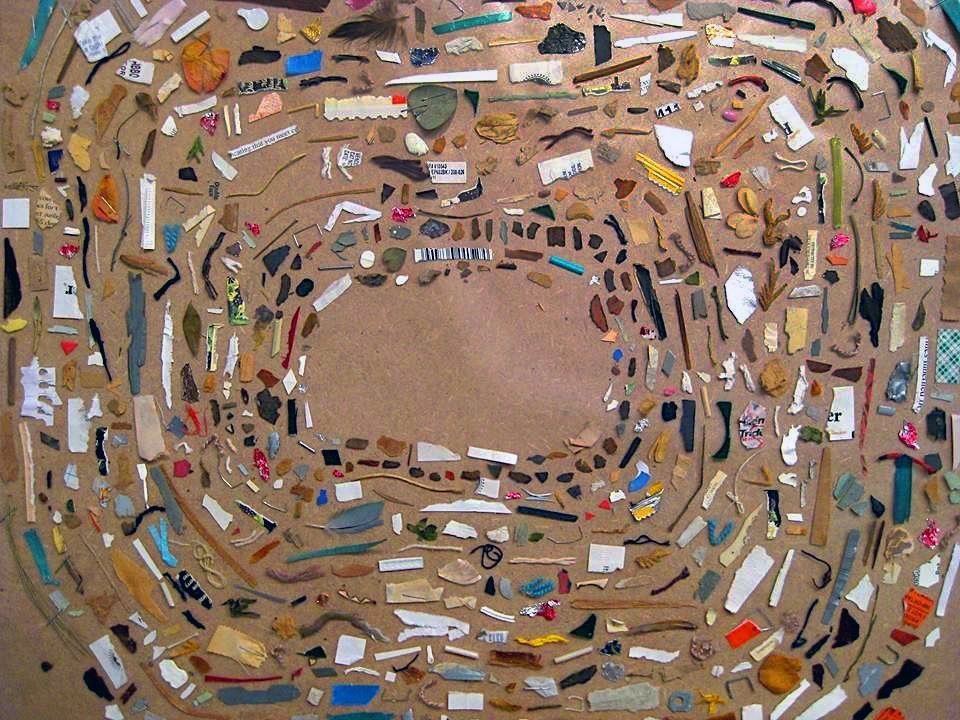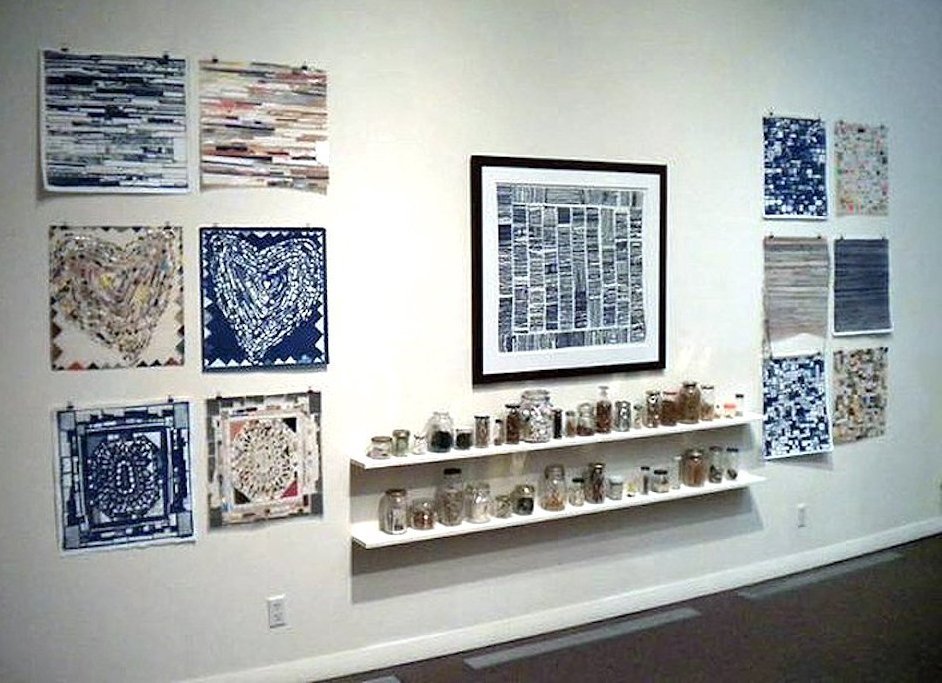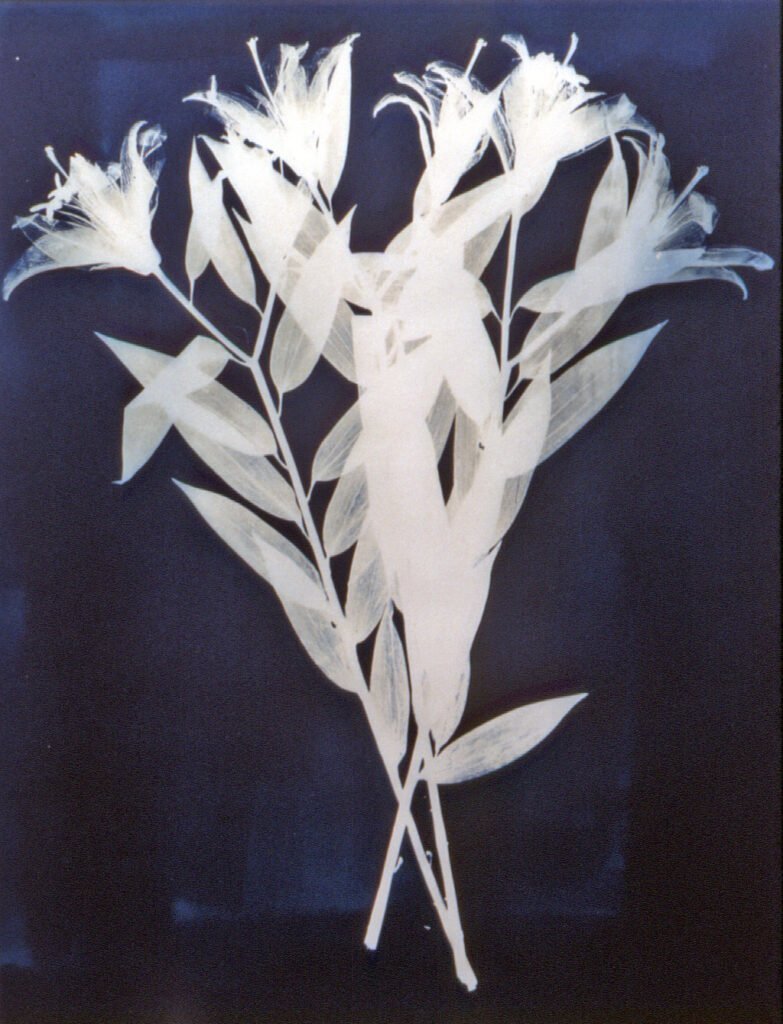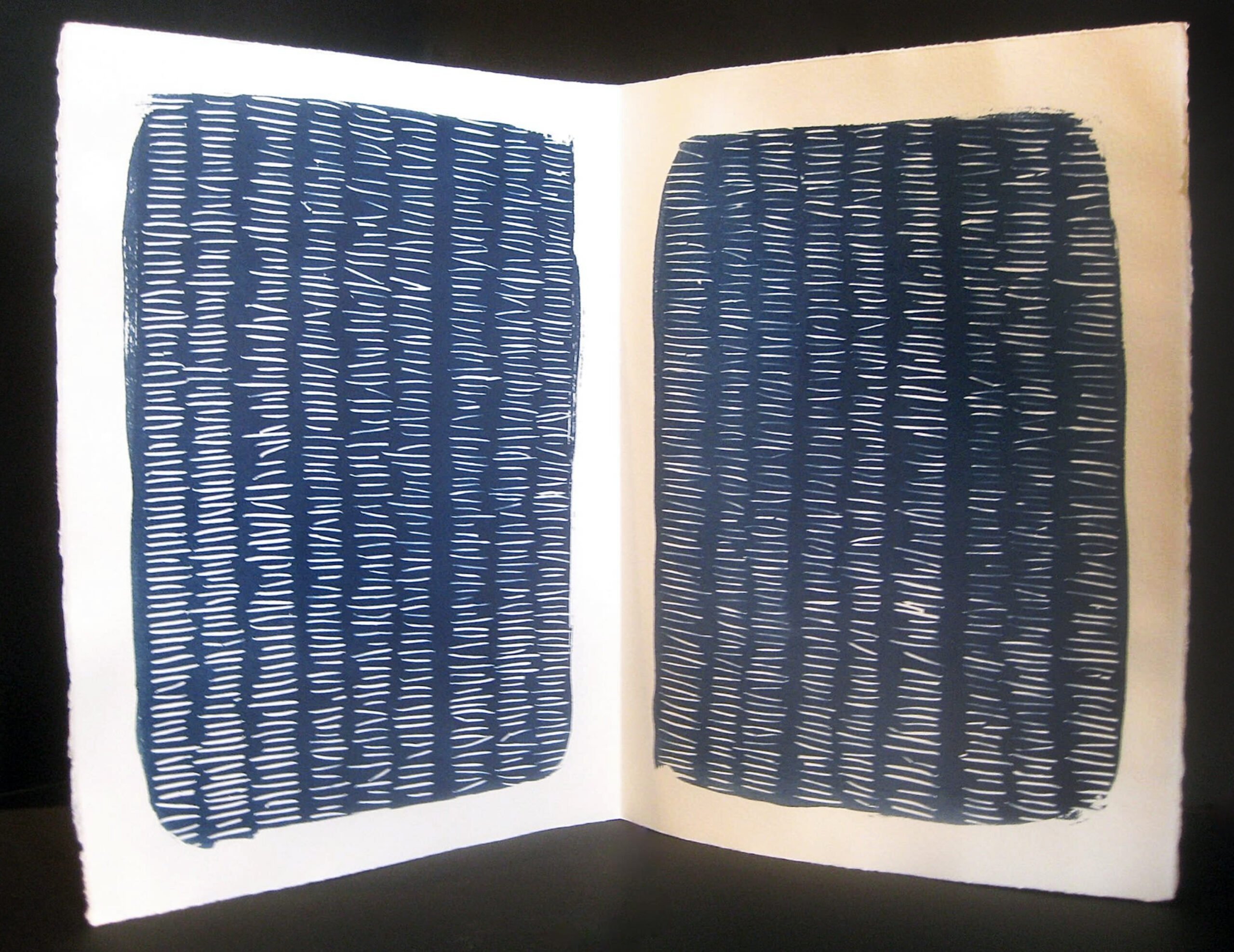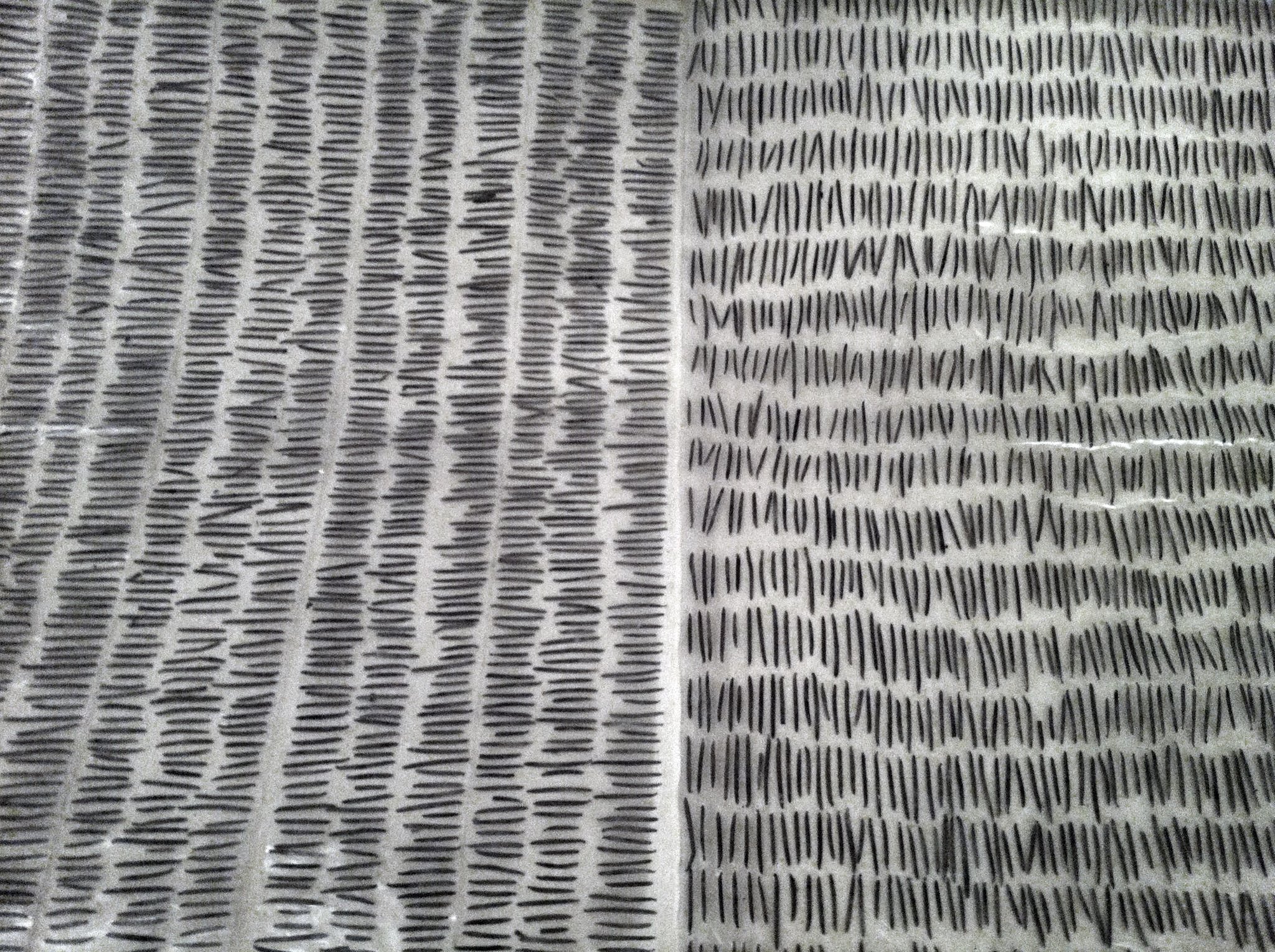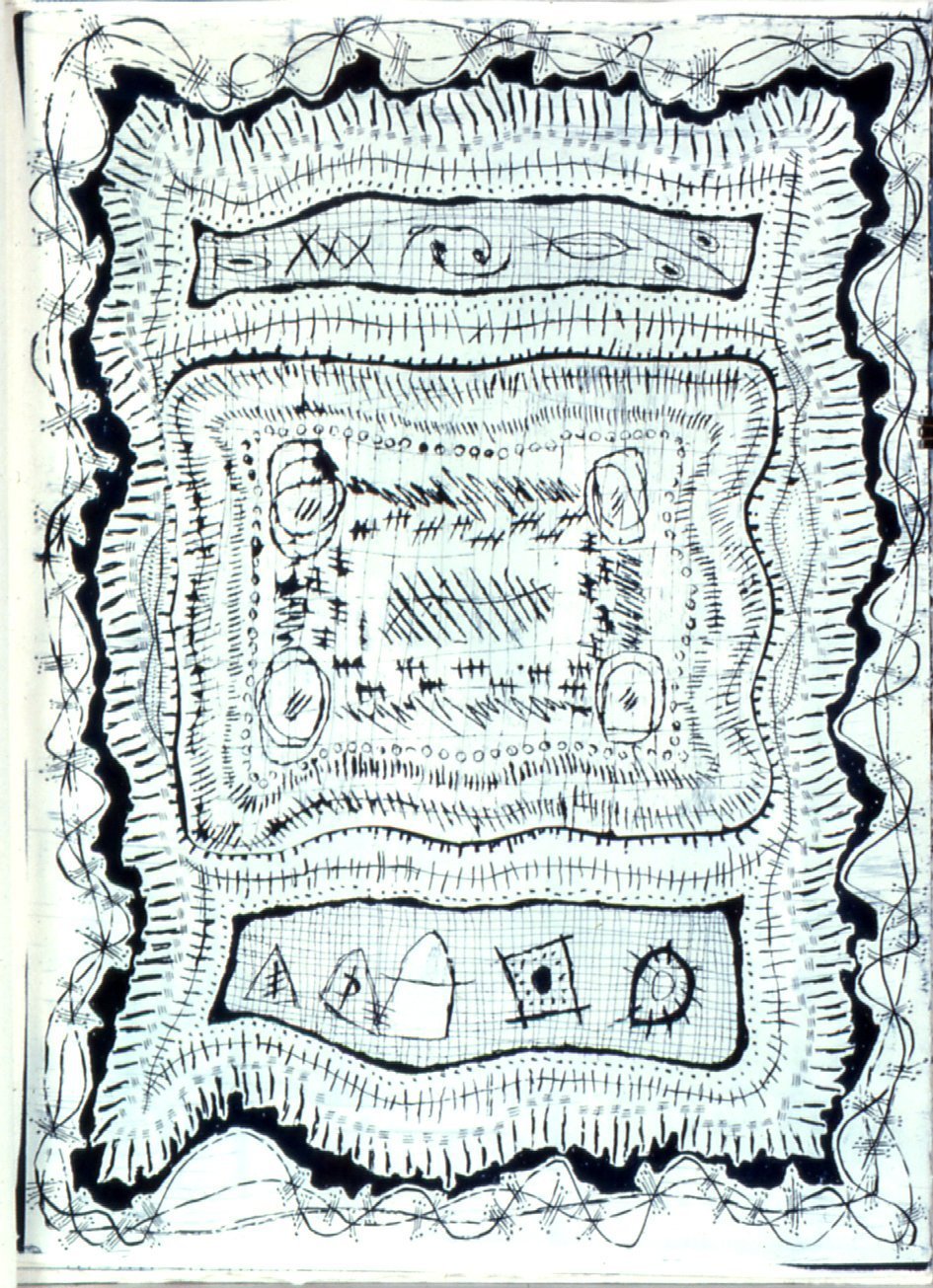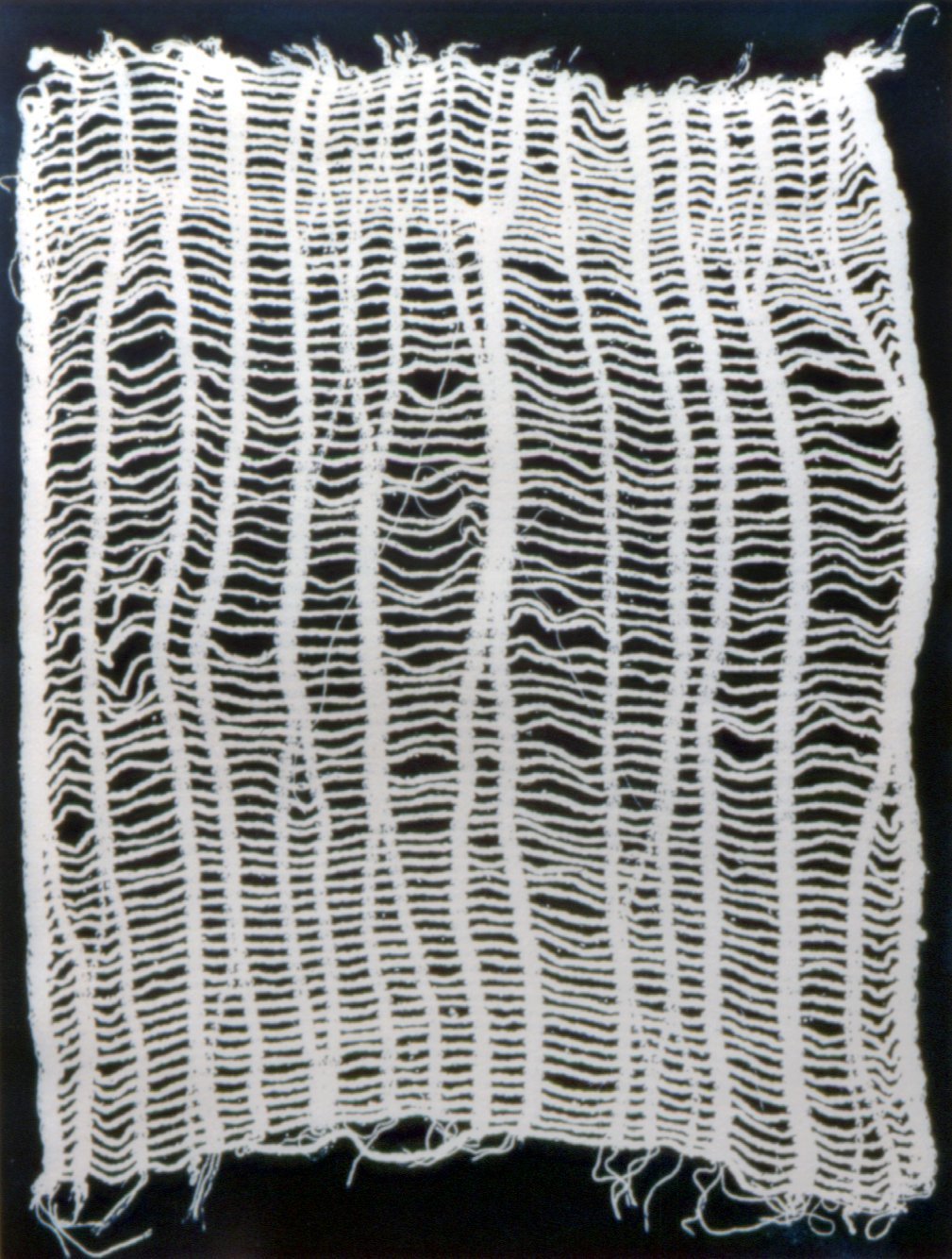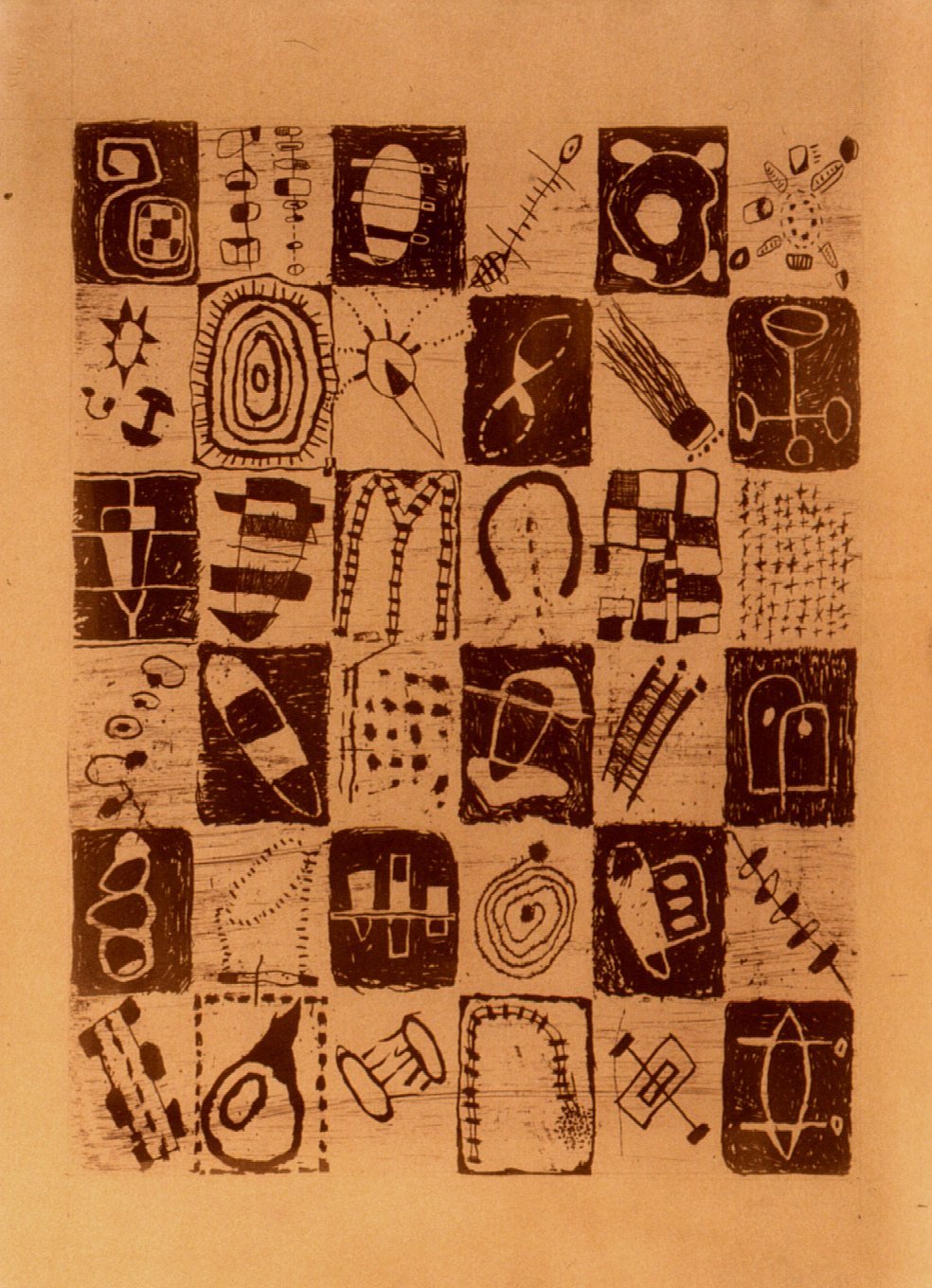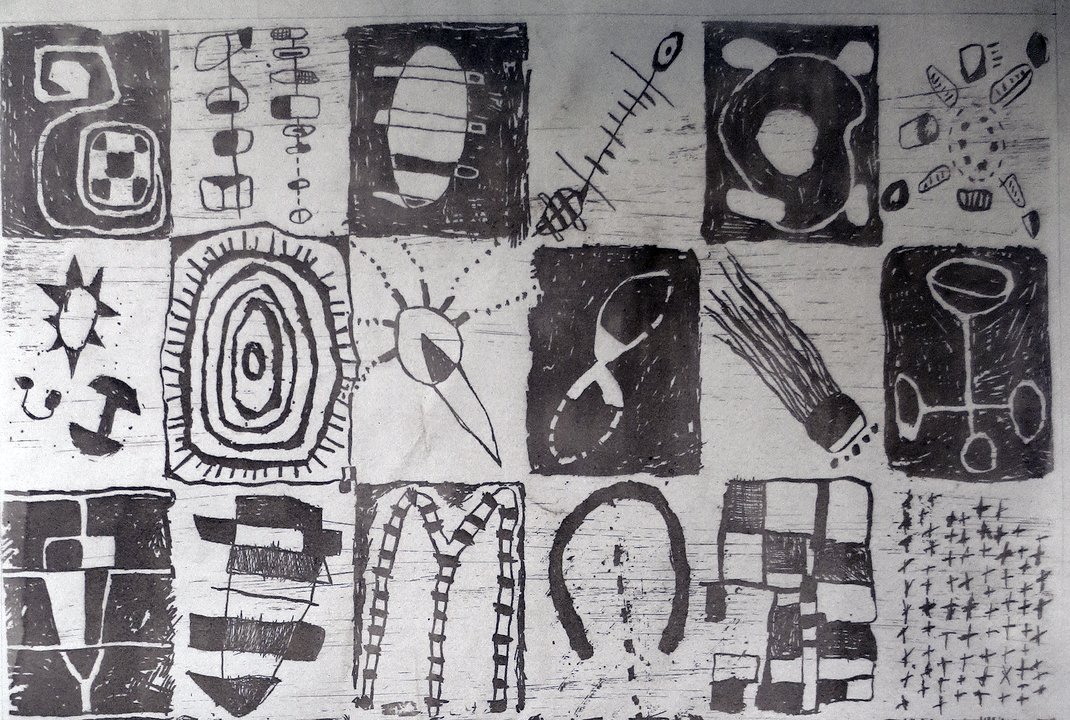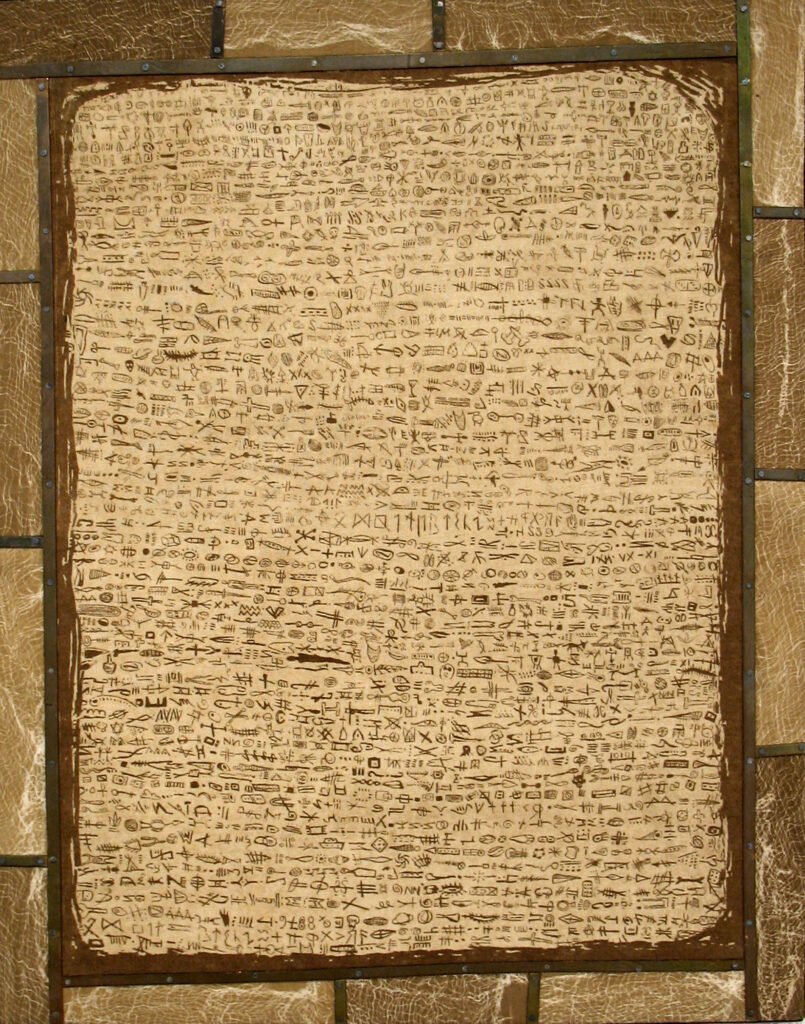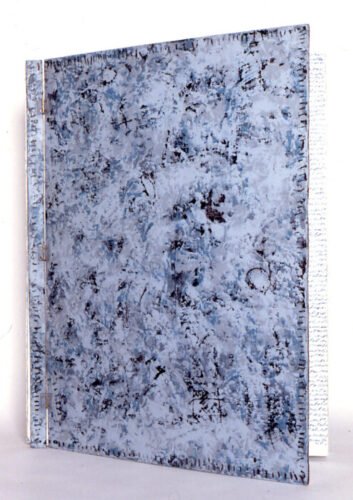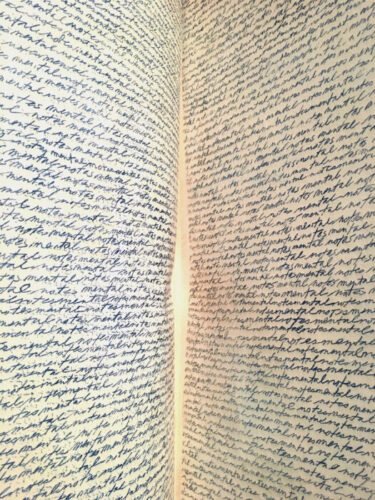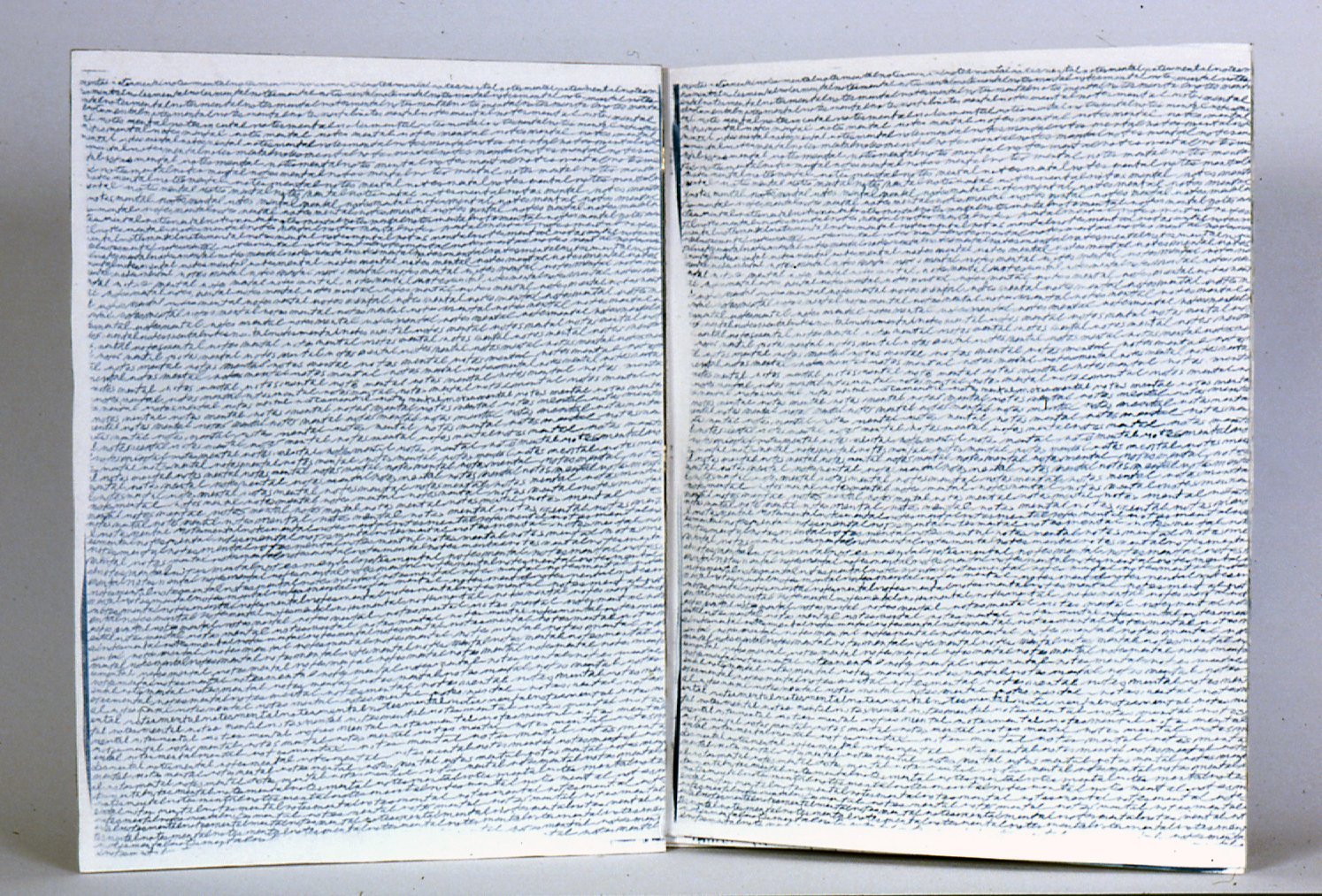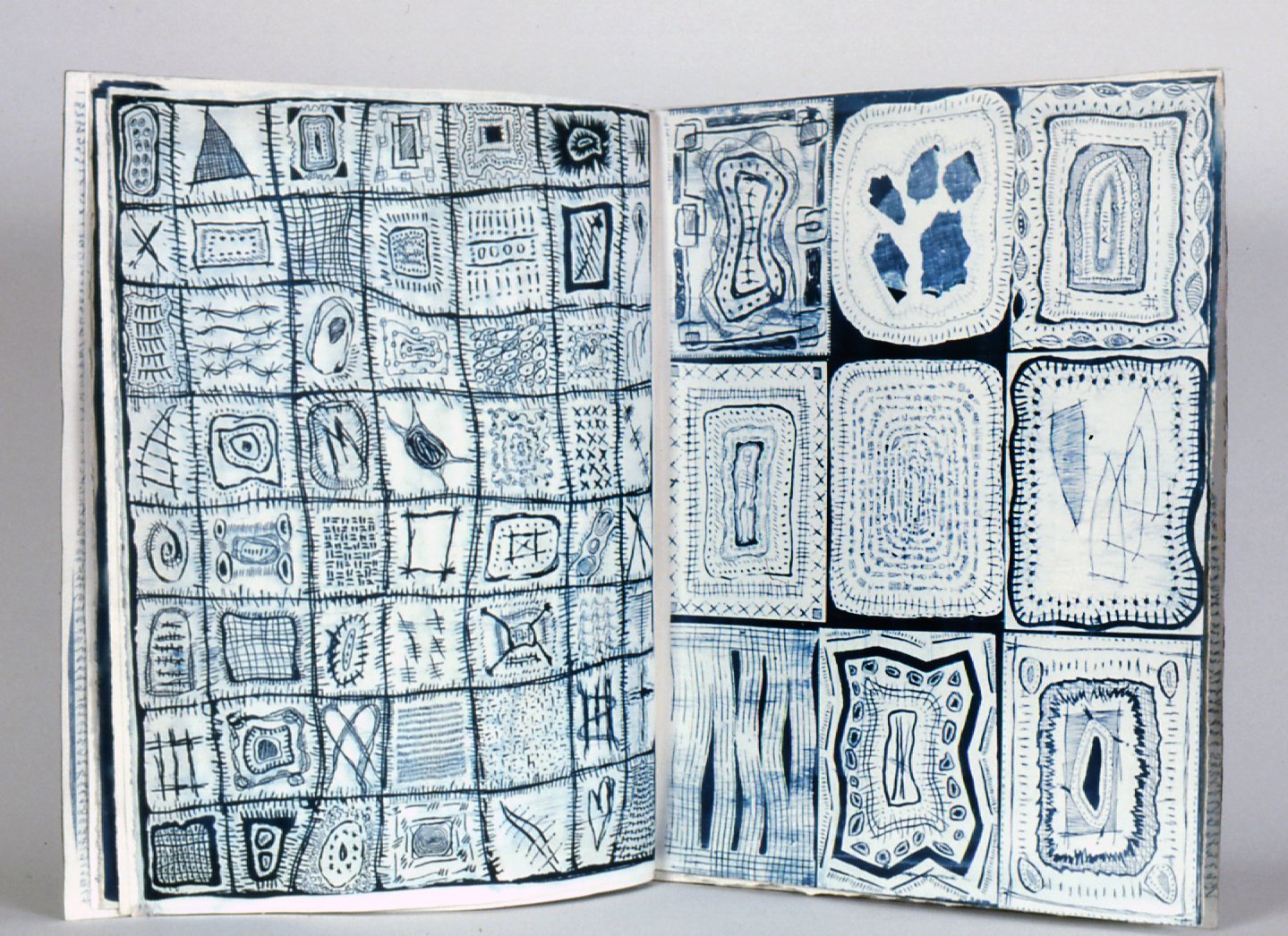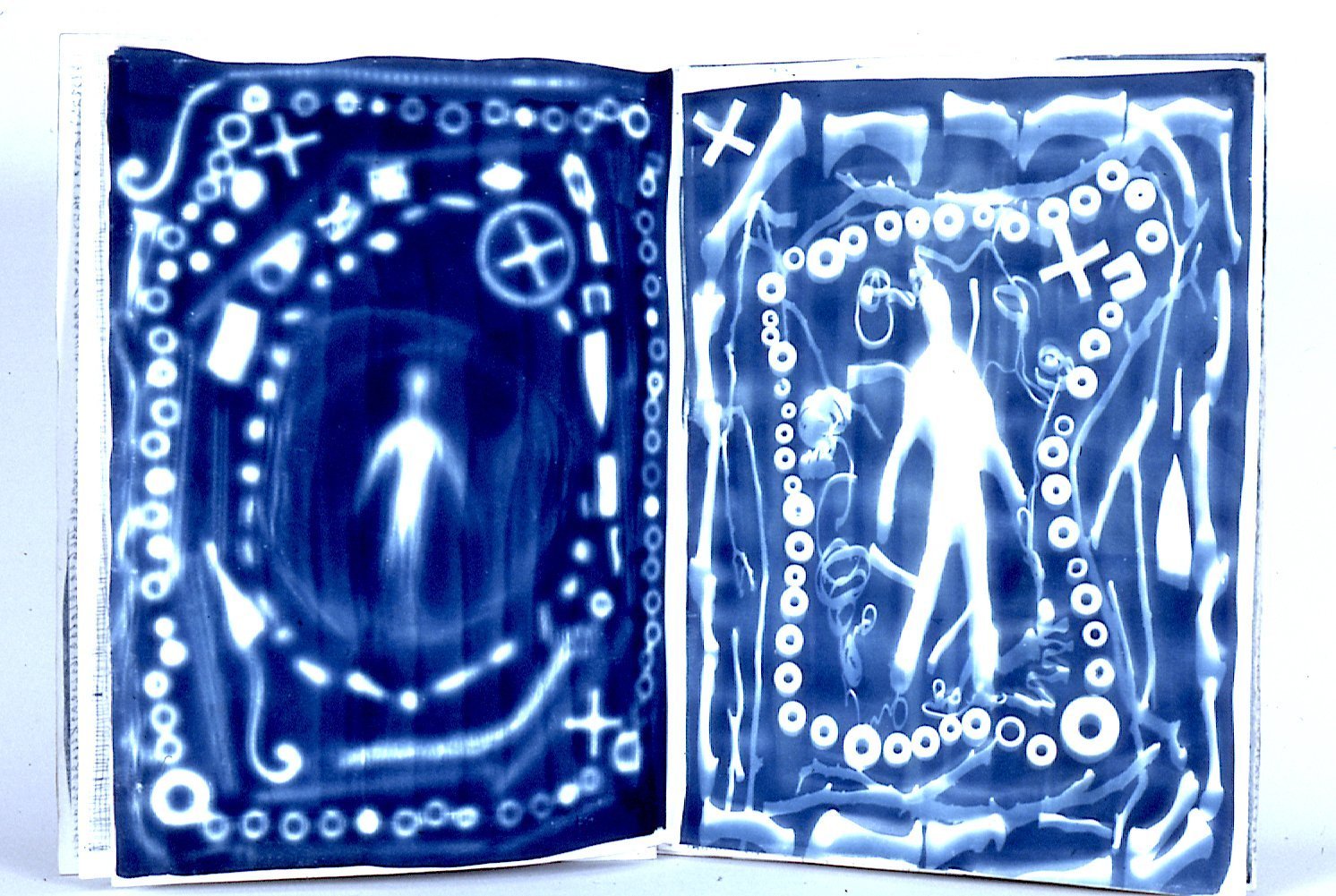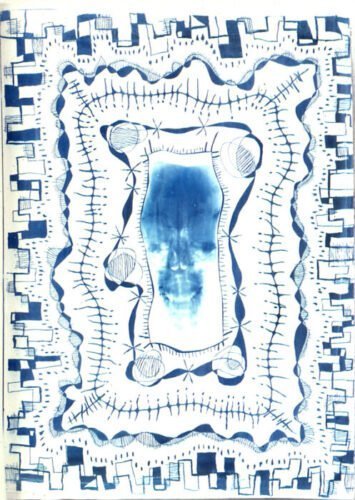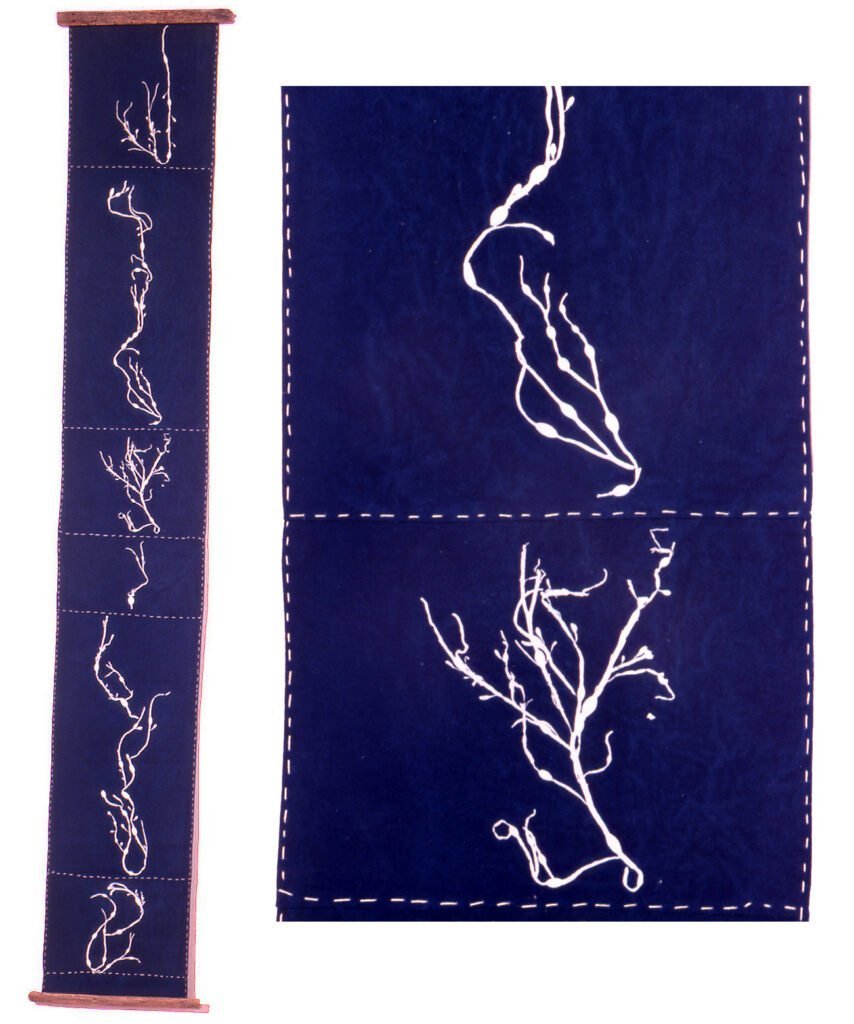Homework is an ongoing series that I began in 2004. I was gutting and renovating a tiny house in Provincetown, going back-and-forth to Boston to teach. I had no time to get into my studio and thought, I’m just going to do something with the detritus of my days. Small pieces of what was left from working on the house, preparing food or teaching a class were organized between two pieces of packing tape creating a “negative” that I could use for my Cyanotypes. Enjoyed them so much that I began doing them on a larger scale using contact paper instead of tape. What’s kept me engaged with this series for so long is the excitement of not knowing what the final cyanotype will look like since the objects I was use are different densities and light would pass through them at different levels. In the end, any color or content in the material I use is lost and all that remains is a silhouette.
(Home Work Series Carpet – Ron Pizzuti Collection)
Homework is an ongoing series that I began in 2004. I was gutting and renovating a tiny house in Provincetown, going back-and-forth to Boston to teach. I had no time to get into my studio and thought, I’m just going to do something with the detritus of my days. Small pieces of what was left from working on the house, preparing food or teaching a class were organized between two pieces of packing tape creating a “negative” that I could use for my Cyanotypes. Enjoyed them so much that I began doing them on a larger scale using contact paper instead of tape. What’s kept me engaged with this series for so long is the excitement of not knowing what the final cyanotype will look like since the objects I was use are different densities and light would pass through them at different levels. In the end, any color or content in the material I use is lost and all that remains is a silhouette.
(Home Work Series Carpet – Ron Pizzuti Collection)
Materials I’ve incorporated include:
35mm film
Aluminum foil
Band-Aids
Book clots
Bread tags
Candy wrappers
Cardboard
Cassette tapes
Chopstick wrappers
Christmas ribbon
Coffee stirrers
Construction debris
Cut up credit cards
Duct tape
Fabric
Feathers
Gift wrap
Hospital bracelets
Maps
Masking tape
Pages of braille
Paint samples
Painters tape
Paper reinforcements
Petrified rubber bands
Plastic strapping
Postage stamps
Price tags
Salt packets
Scrap paper
Shredded documents
Tarpaper
Tea bag labels
Unpaid bills
Used matches
Vintage wallpaper
Window screening
X-rays
I work with the cyanotype process in several ways: using photographic negatives, handmade negatives and actual objects. In this case, it was a bouquet of lilies that I had pressed and dried. When I first saw the finished print, I was very pleasantly surprised at how much detail there was – every little vein in the leaves and flowers showed. I had hoped to do a small series of these but, using the exact same paper, batch of chemicals, exposure unit and exposure time it was impossible to replicate or even get anything close to the original print.
I work with the cyanotype process in several ways: using photographic negatives, handmade negatives and actual objects. In this case, it was a bouquet of lilies that I had pressed and dried. When I first saw the finished print, I was very pleasantly surprised at how much detail there was – every little vein in the leaves and flowers showed. I had hoped to do a small series of these but, using the exact same paper, batch of chemicals, exposure unit and exposure time it was impossible to replicate or even get anything close to the original print.
An expression my mother used often and something I try to do every day. The diptychs and large prints are made from a handmade “negative” (for lack of a better word) composed of 1,593 pine needles sandwiched between two pieces of contact paper. It was done in response to having survived a period of much upheaval. I contracted meningitis, my entire studio was ruined, I was bitten by a dog, a 10-year relationship broke up, I retired from teaching at The School of the Museum of Arts, a ruptured disc in my back… you get the picture. Prints from this ongoing series are in many private collections.
An expression my mother used often and something I try to do every day. The diptychs and large prints are made from a handmade “negative” (for lack of a better word) composed of 1,593 pine needles sandwiched between two pieces of contact paper. It was done in response to having survived a period of much upheaval. I contracted meningitis, my entire studio was ruined, I was bitten by a dog, a 10-year relationship broke up, I retired from teaching at The School of the Museum of Arts, a ruptured disc in my back… you get the picture. Prints from this ongoing series are in many private collections.
This is a tannic acid-dyed cyanotype done from a very large handmade negative (approximately 2′ x 2.75′).
To make the negative, I painted a large piece of acetate with black acrylic paint and then using various small, sharp tools, scratched all of the drawings into it.
I thought I would spend a couple of days on it, but it ended up taking over three weeks because I kept losing the feeling in my fingertips.
The tiny drawings are, “stream of conscious” – some images I use a lot, some things that were on my mind, some “scribbles”, and some four-letter words spelled sideways since I was getting so aggravated.
A dictionary of my personal symbols.
This is a tannic acid-dyed cyanotype done from a very large handmade negative (approximately 2′ x 2.75′).
To make the negative, I painted a large piece of acetate with black acrylic paint and then using various small, sharp tools, scratched all of the drawings into it.
I thought I would spend a couple of days on it, but it ended up taking over three weeks because I kept losing the feeling in my fingertips.
The tiny drawings are, “stream of conscious” – some images I use a lot, some things that were on my mind, some “scribbles”, and some four-letter words spelled sideways since I was getting so aggravated.
A dictionary of my personal symbols.
This large book of cyanotypes began as a collection of the small drawings/doodles that I do while talking on the phone or sitting in a meeting or waiting for something to download. Being focused on whatever I’m doing, they come from an unconscious place and never look like anything I would sit down and deliberately draw. The covers are Masonite with oil paint and wax and small drawings scratched into it. One can get a sense of the scale of the book by looking at the page with a silhouette of my body which is life-size.
This large book of cyanotypes began as a collection of the small drawings/doodles that I do while talking on the phone or sitting in a meeting or waiting for something to download. Being focused on whatever I’m doing, they come from an unconscious place and never look like anything I would sit down and deliberately draw. The covers are Masonite with oil paint and wax and small drawings scratched into it. One can get a sense of the scale of the book by looking at the page with a silhouette of my body which is life-size.
Being alone on a beach for me is calming, meditative, rejuvenating and at the same time, inspiring.
I’m always interested in the “drawings” that I see on the sand left by the tides, birds, stones and seaweed.
This 7′ high scroll is composed of individual panels of pieces of seaweed used to create cyanotype prints on fabric. The panels are stitched together and at either end, the scroll is anchored by pieces of driftwood.
(Private Collection in San Francisco and Tufts University, Boston, MA)
Being alone on a beach for me is calming, meditative, rejuvenating and at the same time, inspiring.
I’m always interested in the “drawings” that I see on the sand left by the tides, birds, stones and seaweed.
This 7′ high scroll is composed of individual panels of pieces of seaweed used to create cyanotype prints on fabric. The panels are stitched together and at either end, the scroll is anchored by pieces of driftwood.
(Private Collection in San Francisco and Tufts University, Boston, MA)
